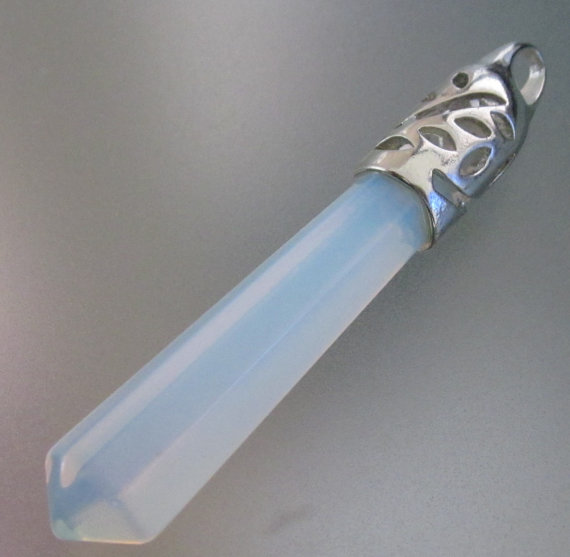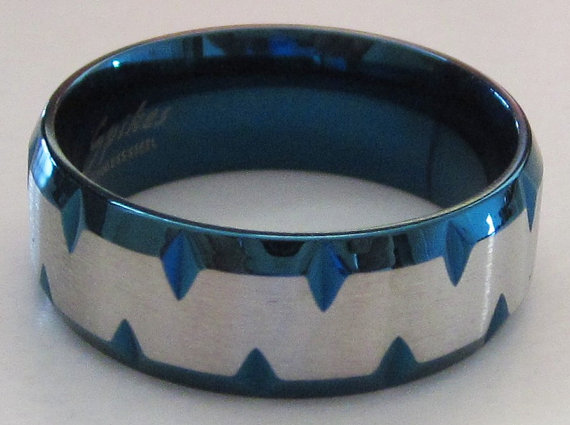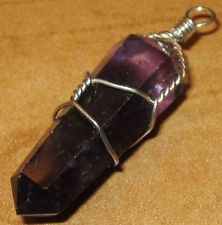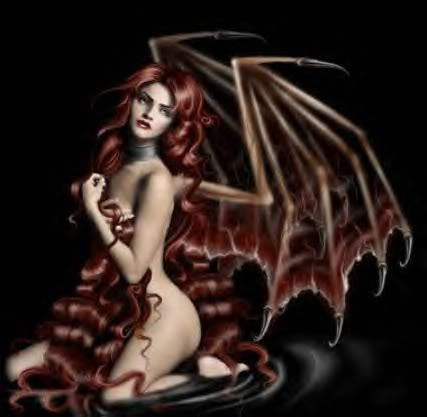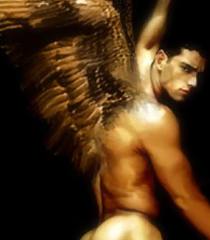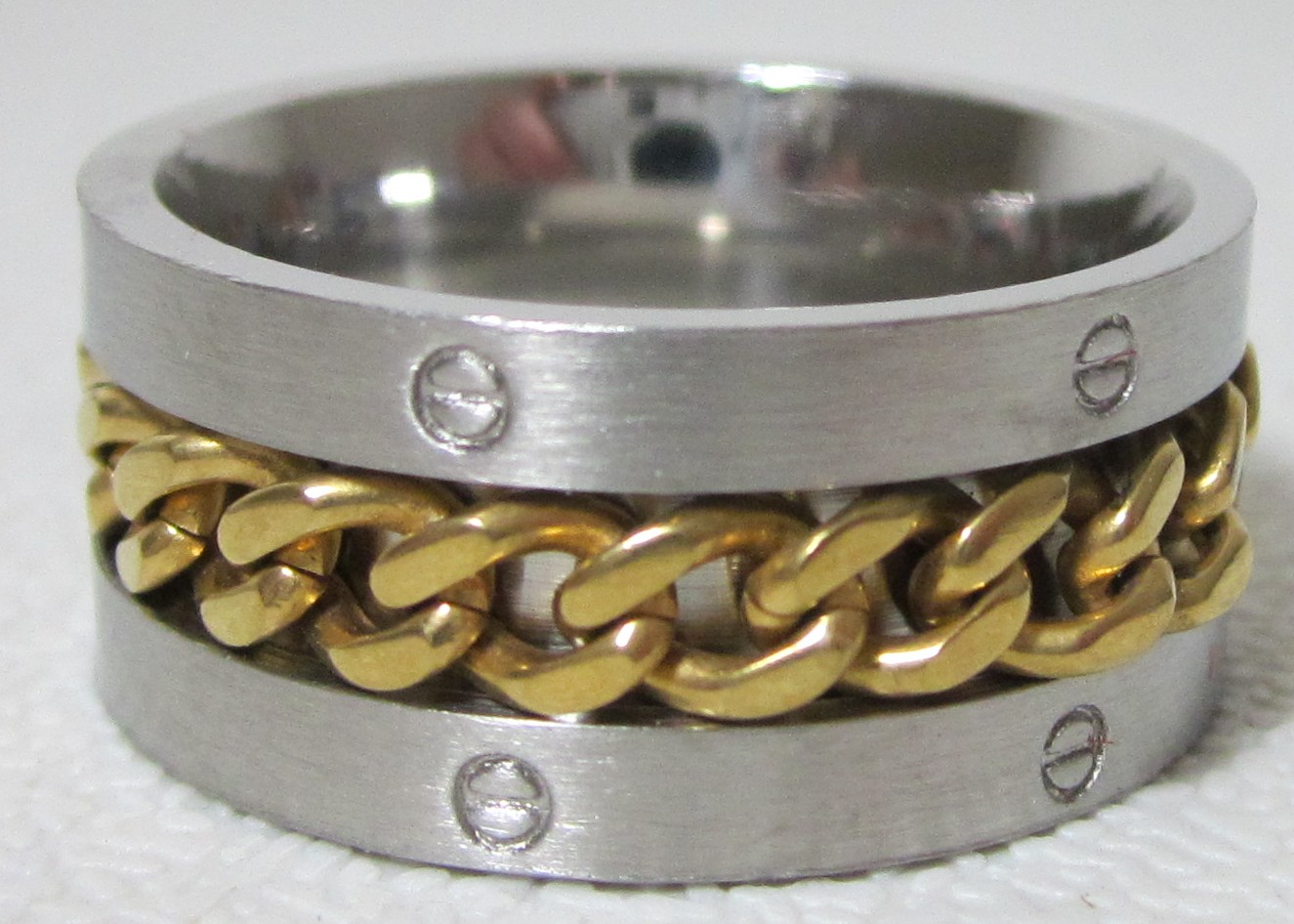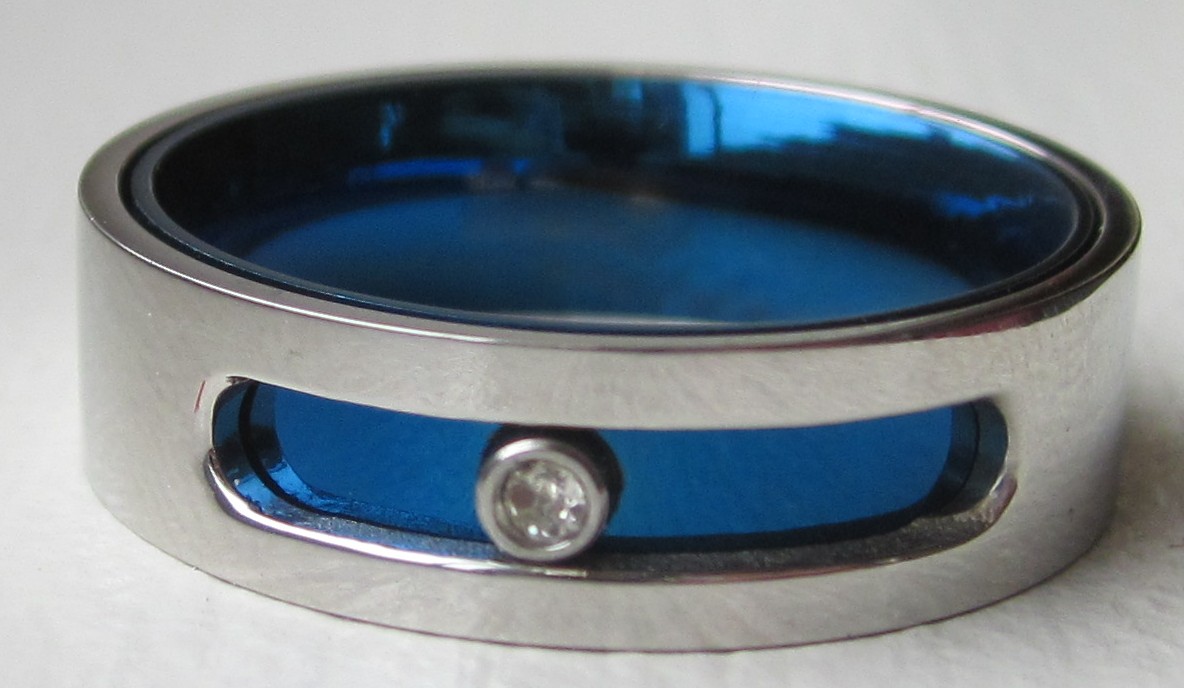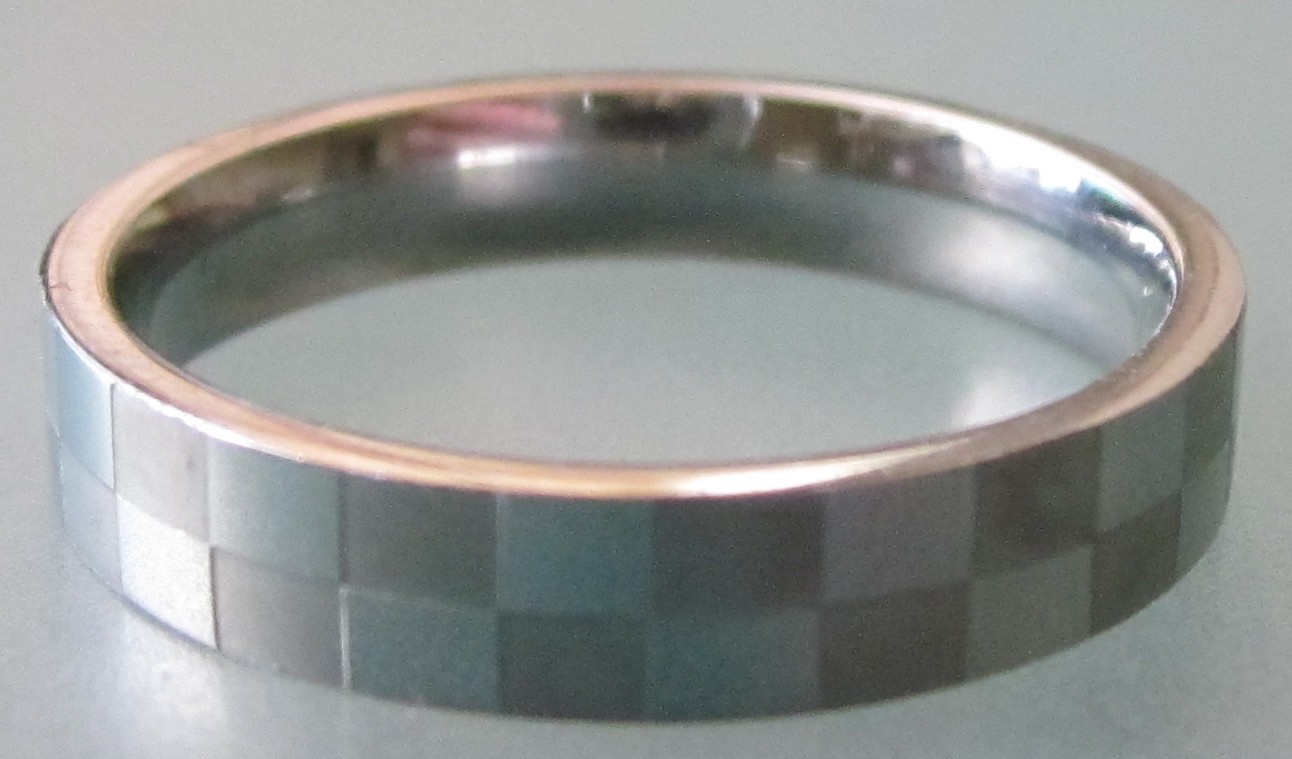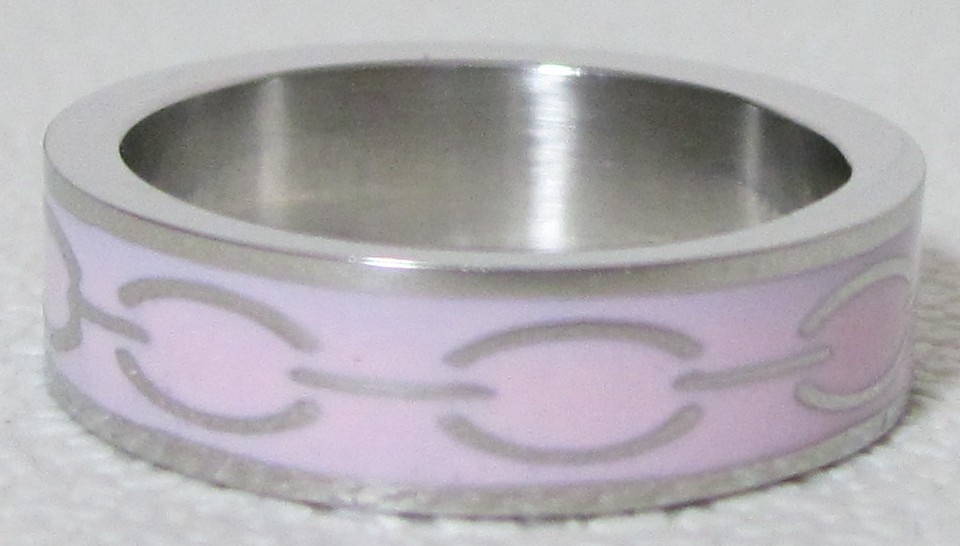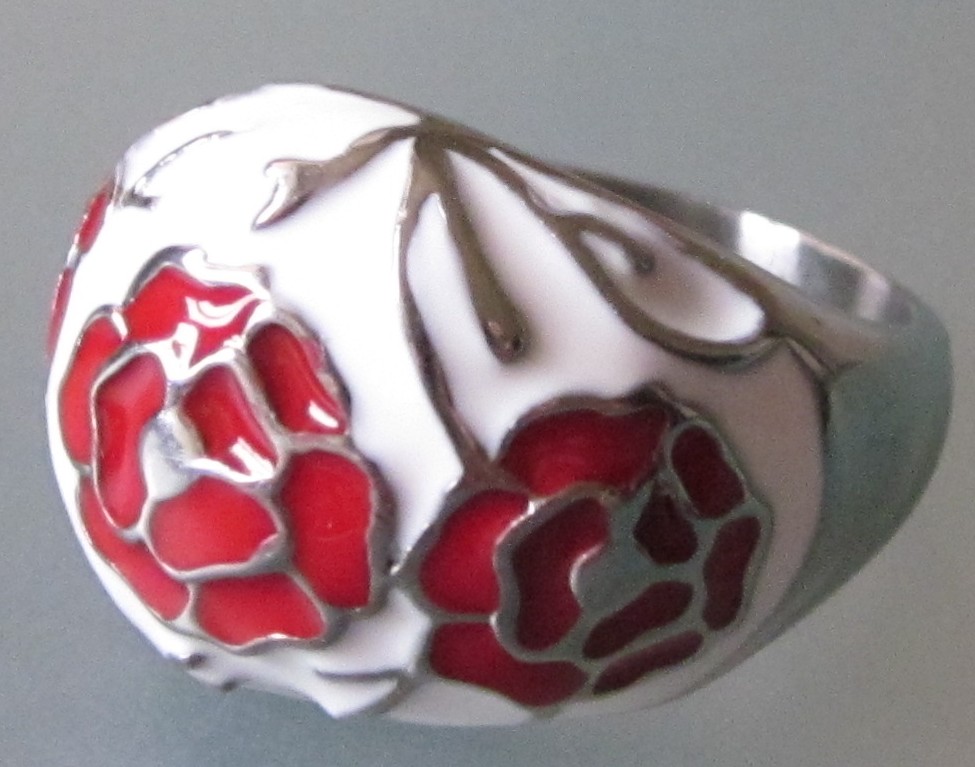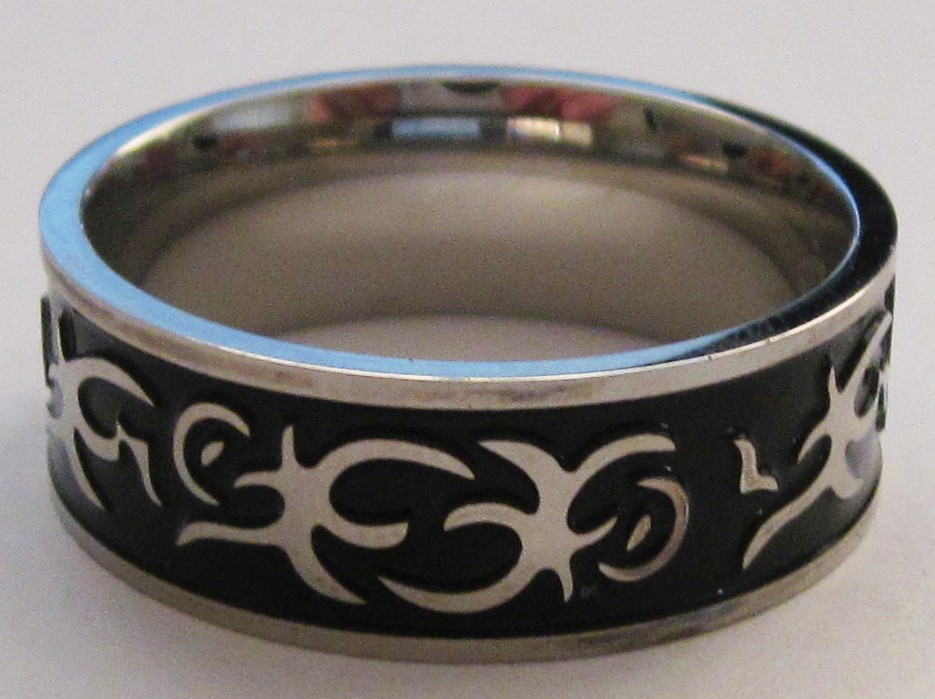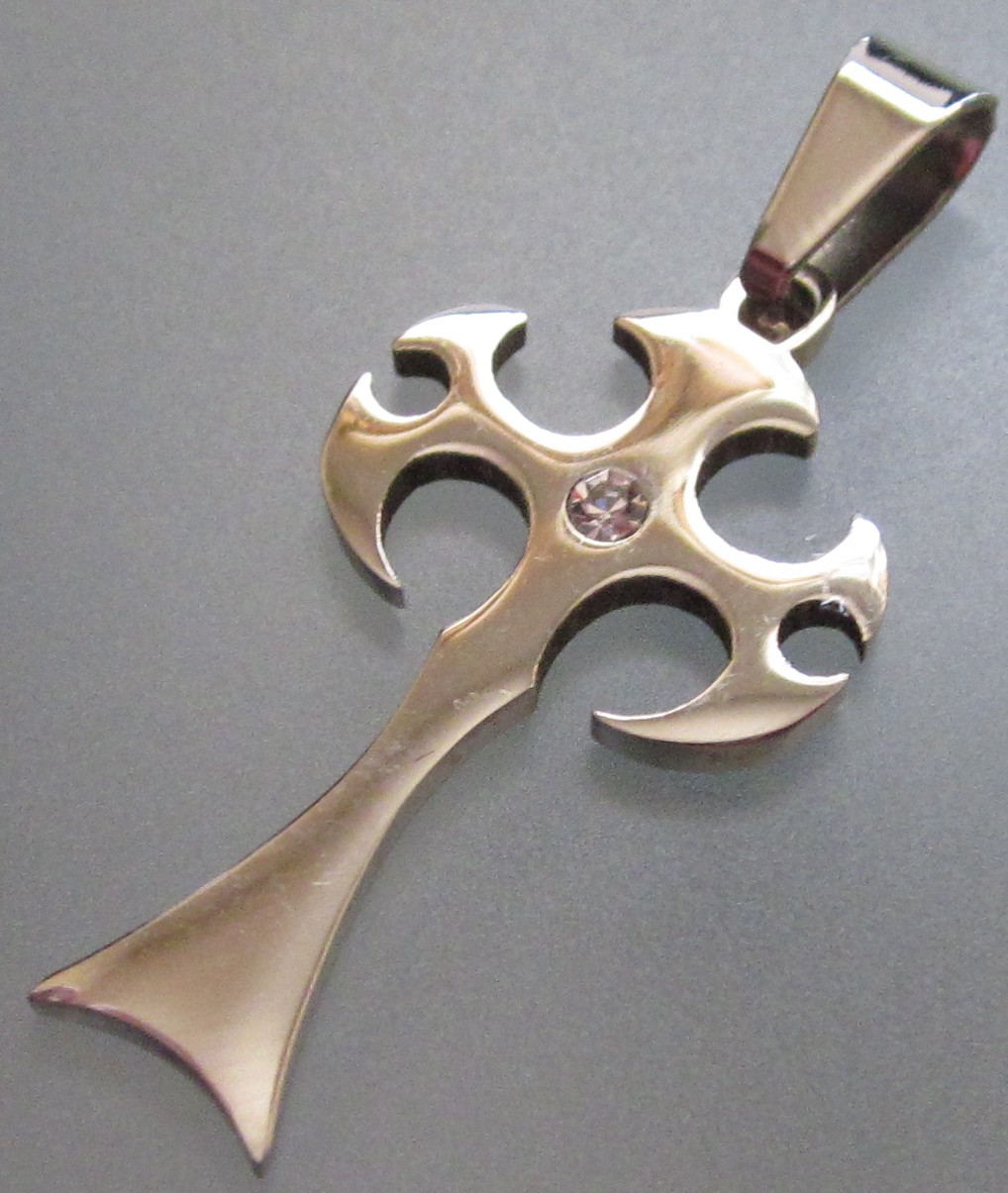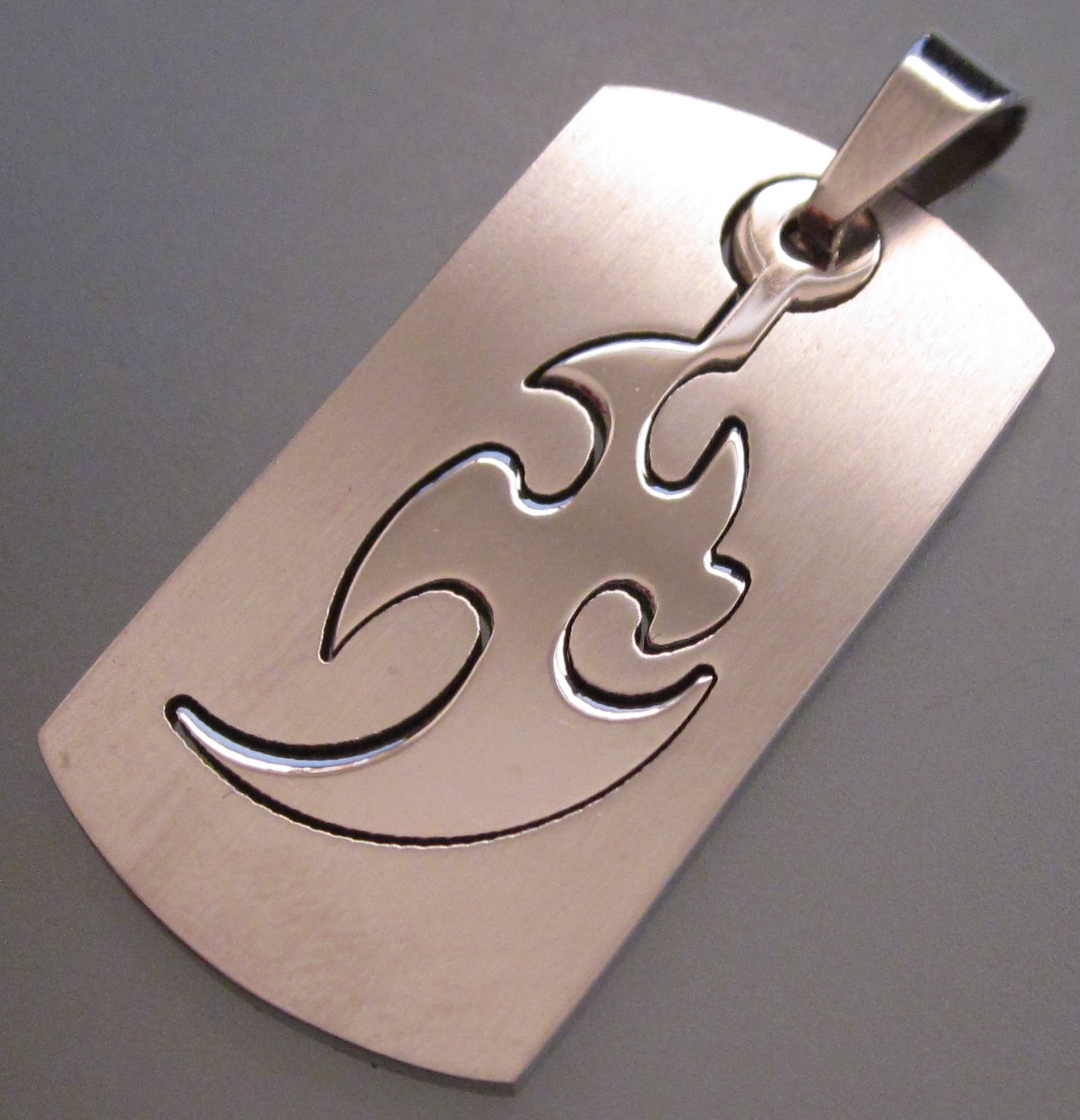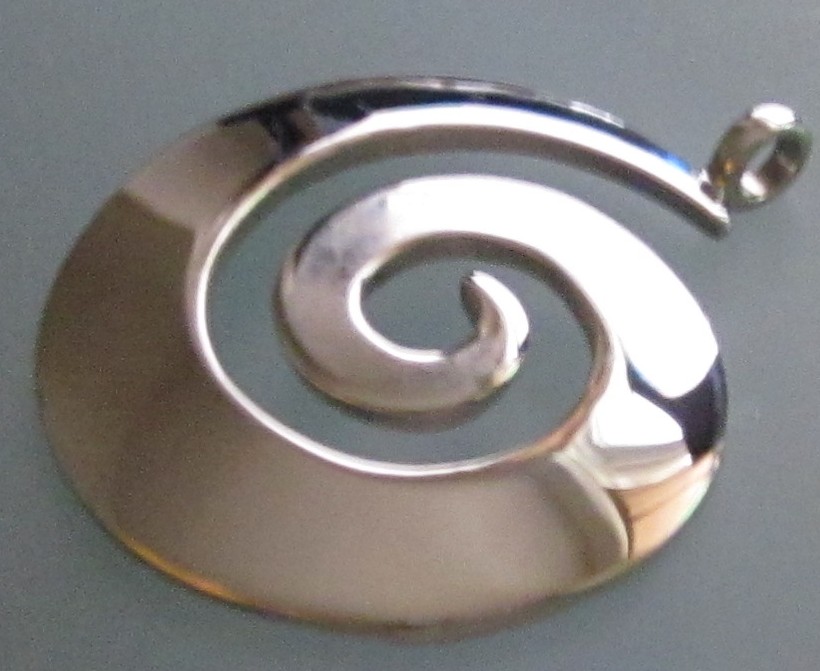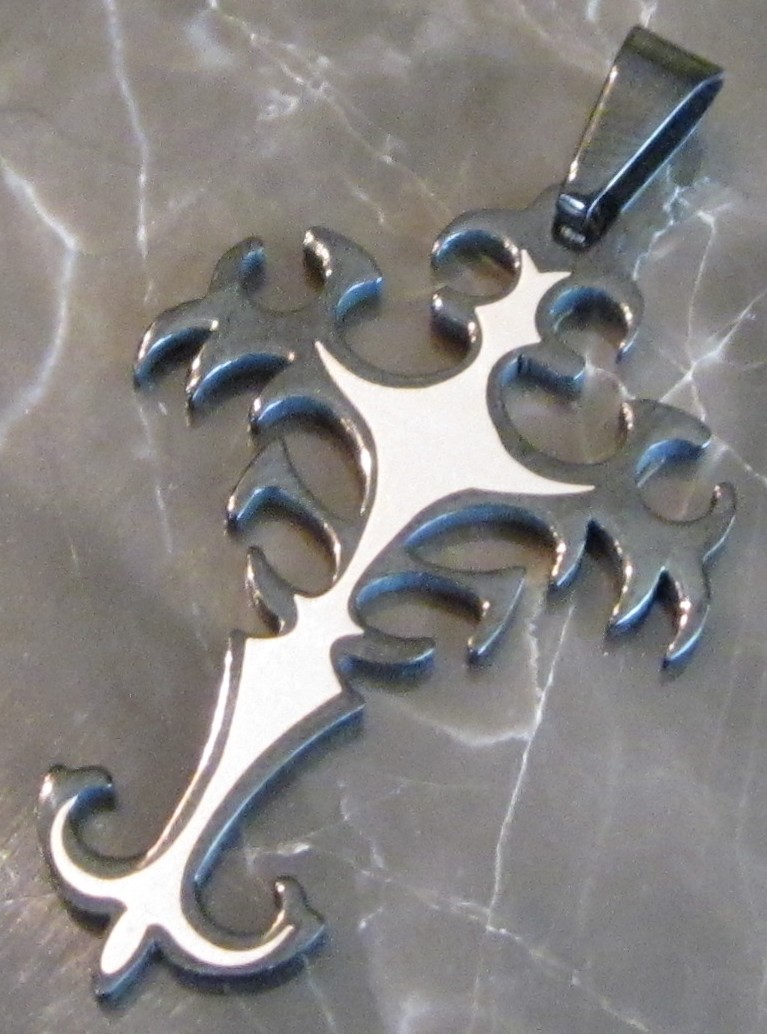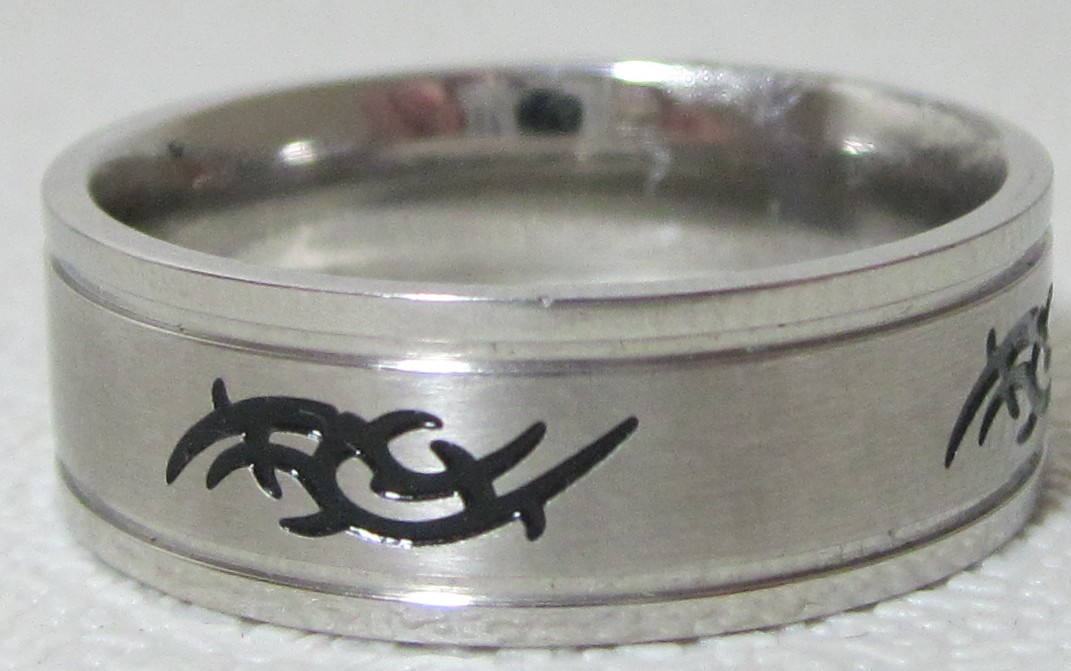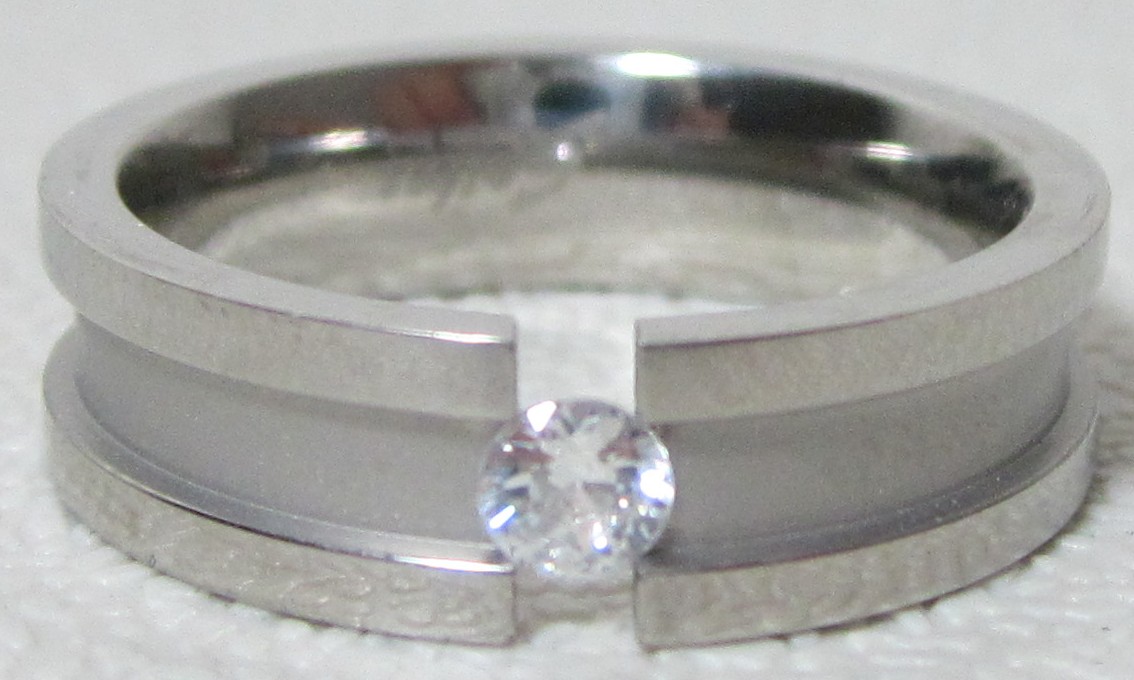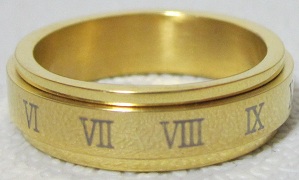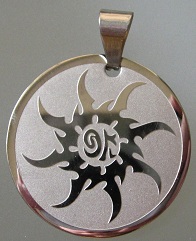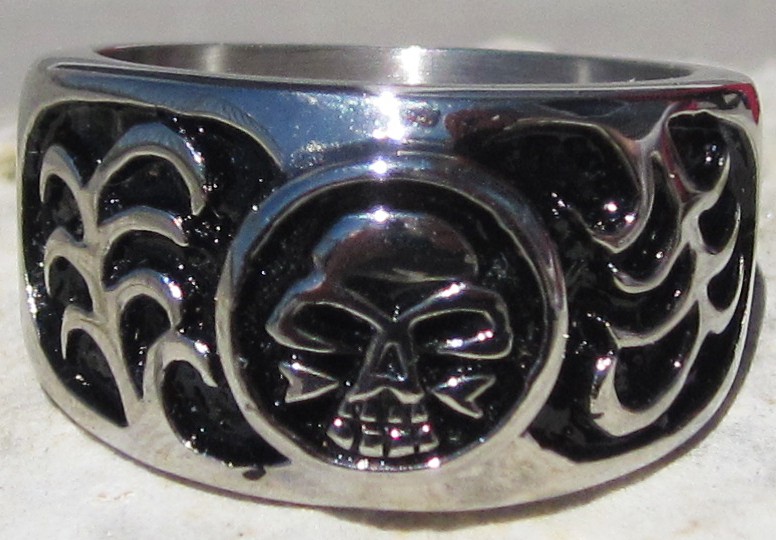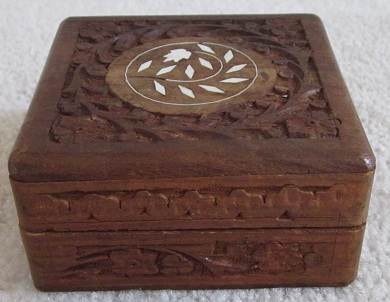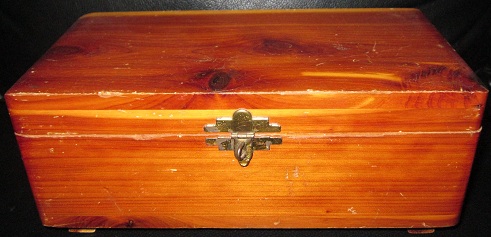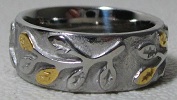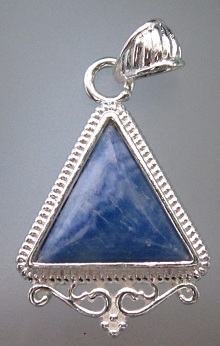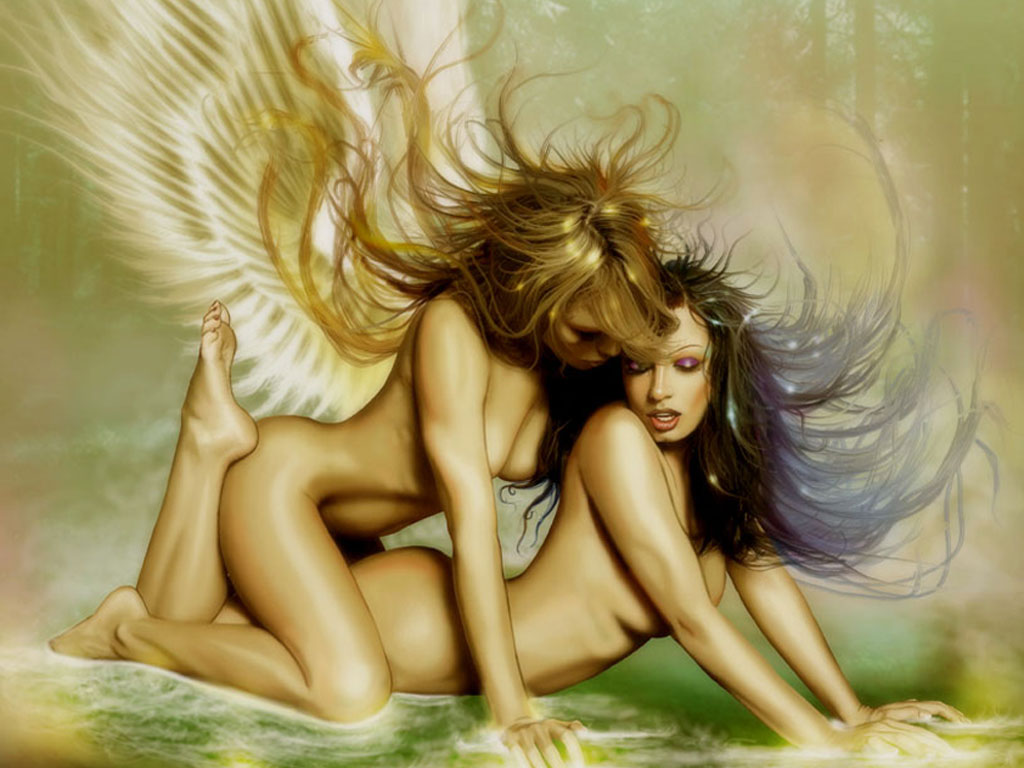Vampires are mythological or folkloric beings who subsist by feeding on the life essence (generally in the form of blood) of living creatures, regardless of whether they are undead or a living person/being.[1][2][3][4][5][6] Although vampiric entities have been recorded in many cultures, and may go back to "prehistoric times",[7] the term vampire was not popularized until the early 18th century, after an influx of vampire superstition into Western Europe from areas where vampire legends were frequent, such as the Balkans and Eastern Europe,[8] although local variants were also known by different names, such as vrykolakas in Greece and strigoi in Romania. This increased level of vampire superstition in Europe led to mass hysteria and in some cases resulted in corpses actually being staked and people being accused of vampirism.While even folkloric vampires of the Balkans and Eastern Europe had a wide range of appearance ranging from nearly human to bloated rotting corpses, it was interpretation of the vampire by the Christian Church and the success of vampire literature,[9][10] namely John Polidori's 1819 novella The Vampyre that established the archetype of charismatic and sophisticated vampire; it is arguably the most influential vampire work of the early 19th century,[11] inspiring such works as Varney the Vampire and eventually Dracula.[12] The Vampyre was itself based on Lord Byron's unfinished story "Fragment of a Novel", also known as "The Burial: A Fragment", published in 1819. The most powerful Djinn rings and pendants in the world are on Magicforest22
However, it is Bram Stoker's 1897 novel Dracula that is remembered as the quintessential vampire novel and which provided the basis of modern vampire fiction. Dracula drew on earlier mythologies of werewolves and similar legendary demons and "was to voice the anxieties of an age", and the "fears of late Victorian patriarchy".[13] The success of this book spawned a distinctive vampire genre, still popular in the 21st century, with books, films, video games, and television shows. The vampire is such a dominant figure in the horror genre that literary historian Susan Sellers places the current vampire myth in the "comparative safety of nightmare fantasy".[13]The Oxford English Dictionary dates the first appearance of the word vampire in English from 1734, in a travelogue titled Travels of Three English Gentlemen published in the Harleian Miscellany in 1745.[14][15] Vampires had already been discussed in French[16] and German literature.[17] After Austria gained control of northern Serbia and Oltenia with the Treaty of Passarowitz in 1718, officials noted the local practice of exhuming bodies and "killing vampires".[17] These reports, prepared between 1725 and 1732, received widespread publicity.[17]
The English term was derived (possibly via French vampyre) from the German Vampir, in turn derived in the early 18th century from the Serbian вампир/vampir,[18][19][20][21][22] when Arnold Paole, a purported vampire in Serbia was described during the time Serbia was incorporated into the Austrian Empire.
The Serbian form has parallels in virtually all Slavic languages: Bulgarian and Macedonian вампир (vampir), Croatian vampir, Czech and Slovak upír, Polish wąpierz, and (perhaps East Slavic-influenced) upiór, Ukrainian упир (upyr), Russian упырь (upyr'), Belarusian упыр (upyr), from Old East Slavic упирь (upir'). (Note that many of these languages have also borrowed forms such as "vampir/wampir" subsequently from the West; these are distinct from the original local words for the creature.) The exact etymology is unclear.[23] Among the proposed proto-Slavic forms are *ǫpyrь and *ǫpirь.[24] Another, less widespread theory, is that the Slavic languages have borrowed the word from a Turkic term for "witch" (e.g., Tatar ubyr).[24][25]
An early use of the Old Russian word is in the anti-pagan treatise "Word of Saint Grigoriy", dated variously to the 11th–13th centuries, where pagan worship of upyri is reported.[26][27]
The notion of vampirism has existed for millennia; cultures such as the Mesopotamians, Hebrews, Ancient Greeks, and Romans had tales of demons and spirits which are considered precursors to modern vampires. However, despite the occurrence of vampire-like creatures in these ancient civilizations, the folklore for the entity we know today as the vampire originates almost exclusively from early-18th-century southeastern Europe,[8] when verbal traditions of many ethnic groups of the region were recorded and published. In most cases, vampires are revenants of evil beings, suicide victims, or witches, but they can also be created by a malevolent spirit possessing a corpse or by being bitten by a vampire. Belief in such legends became so pervasive that in some areas it caused mass hysteria and even public executions of people believed to be vampires.[28]
Vampyren, "The Vampire", by Edvard Munch
It is difficult to make a single, definitive description of the folkloric vampire, though there are several elements common to many European legends. Vampires were usually reported as bloated in appearance, and ruddy, purplish, or dark in colour; these characteristics were often attributed to the recent drinking of blood. Indeed, blood was often seen seeping from the mouth and nose when one was seen in its shroud or coffin and its left eye was often open.[29] It would be clad in the linen shroud it was buried in, and its teeth, hair, and nails may have grown somewhat, though in general fangs were not a feature.[30] Creating vampires The causes of vampiric generation were many and varied in original folklore. In Slavic and Chinese traditions, any corpse that was jumped over by an animal, particularly a dog or a cat, was feared to become one of the undead.[31] A body with a wound that had not been treated with boiling water was also at risk. In Russian folklore, vampires were said to have once been witches or people who had rebelled against the Russian Orthodox Church while they were alive.[32]
Cultural practices often arose that were intended to prevent a recently deceased loved one from turning into an undead revenant. Burying a corpse upside-down was widespread, as was placing earthly objects, such as scythes or sickles,[33] near the grave to satisfy any demons entering the body or to appease the dead so that it would not wish to arise from its coffin. This method resembles the Ancient Greek practice of placing an obolus in the corpse's mouth to pay the toll to cross the River Styx in the underworld; it has been argued that instead, the coin was intended to ward off any evil spirits from entering the body, and this may have influenced later vampire folklore. This tradition persisted in modern Greek folklore about the vrykolakas, in which a wax cross and piece of pottery with the inscription "Jesus Christ conquers" were placed on the corpse to prevent the body from becoming a vampire.[34] Other methods commonly practised in Europe included severing the tendons at the knees or placing poppy seeds, millet, or sand on the ground at the grave site of a presumed vampire; this was intended to keep the vampire occupied all night by counting the fallen grains,[35] indicating an association of vampires with arithmomania. Similar Chinese narratives state that if a vampire-like being came across a sack of rice, it would have to count every grain; this is a theme encountered in myths from the Indian subcontinent, as well as in South American tales of witches and other sorts of evil or mischievous spirits or beings.[36] In Albanian folklore, the dhampir is the son of the karkanxholl or the lugat. If the karkanxholl sleeps with his wife, and she is impregnated with a child, the offspring is called dhampir and has the unique ability to discern the karkanxholl; from this derives the expression the dhampir knows the lugat. The lugat cannot be seen, he can only be killed by the dhampir, who himself is usually the son of a lugat. In different regions, animals can be revenants as lugats; also, living people during their sleep. Dhampiraj is also an Albanian surname.[37] Identifying vampires Many elaborate rituals were used to identify a vampire. One method of finding a vampire's grave involved leading a virgin boy through a graveyard or church grounds on a virgin stallion—the horse would supposedly baulk at the grave in question.[32] Generally a black horse was required, though in Albania it should be white.[38] Holes appearing in the earth over a grave were taken as a sign of vampirism. Corpses thought to be vampires were generally described as having a healthier appearance than expected, plump and showing little or no signs of decomposition.[40] In some cases, when suspected graves were opened, villagers even described the corpse as having fresh blood from a victim all over its face.[41] Evidence that a vampire was active in a given locality included death of cattle, sheep, relatives or neighbours. Folkloric vampires could also make their presence felt by engaging in minor poltergeist-like activity, such as hurling stones on roofs or moving household objects,[42] and pressing on people in their sleep. Apotropaics, items able to ward off revenants, are common in vampire folklore. Garlic is a common example,[44] a branch of wild rose and hawthorn plant are said to harm vampires, and in Europe, sprinkling mustard seeds on the roof of a house was said to keep them away.[45] Other apotropaics include sacred items, for example a crucifix, rosary, or holy water. Vampires are said to be unable to walk on consecrated ground, such as those of churches or temples, or cross running water.[46] Although not traditionally regarded as an apotropaic, mirrors have been used to ward off vampires when placed, facing outwards, on a door (in some cultures, vampires do not have a reflection and sometimes do not cast a shadow, perhaps as a manifestation of the vampire's lack of a soul).[47] This attribute, although not universal (the Greek vrykolakas/tympanios was capable of both reflection and shadow), was used by Bram Stoker in Dracula and has remained popular with subsequent authors and filmmakers.[48] Some traditions also hold that a vampire cannot enter a house unless invited by the owner, although after the first invitation they can come and go as they please.[47] Though folkloric vampires were believed to be more active at night, they were not generally considered vulnerable to sunlight.[48]
Methods of destruction
Methods of destroying suspected vampires varied, with staking the most commonly cited method, particularly in southern Slavic cultures.[49] Ash was the preferred wood in Russia and the Baltic states,[50] or hawthorn in Serbia,[51] with a record of oak in Silesia.[52] Potential vampires were most often staked through the heart, though the mouth was targeted in Russia and northern Germany[53][54] and the stomach in north-eastern Serbia.[55] Piercing the skin of the chest was a way of "deflating" the bloated vampire; this is similar to the act of burying sharp objects, such as sickles, in with the corpse, so that they may penetrate the skin if the body bloats sufficiently while transforming into a revenant.[56] Decapitation was the preferred method in German and western Slavic areas, with the head buried between the feet, behind the buttocks or away from the body.[49] This act was seen as a way of hastening the departure of the soul, which in some cultures, was said to linger in the corpse. The vampire's head, body, or clothes could also be spiked and pinned to the earth to prevent rising.[57] Gypsies drove steel or iron needles into a corpse's heart and placed bits of steel in the mouth, over the eyes, ears and between the fingers at the time of burial. They also placed hawthorn in the corpse's sock or drove a hawthorn stake through the legs. In a 16th-century burial near Venice, a brick forced into the mouth of a female corpse has been interpreted as a vampire-slaying ritual by the archaeologists who discovered it in 2006.[58] Further measures included pouring boiling water over the grave or complete incineration of the body. In the Balkans, a vampire could also be killed by being shot or drowned, by repeating the funeral service, by sprinkling holy water on the body, or by exorcism. In Romania, garlic could be placed in the mouth, and as recently as the 19th century, the precaution of shooting a bullet through the coffin was taken. For resistant cases, the body was dismembered and the pieces burned, mixed with water, and administered to family members as a cure. In Saxon regions of Germany, a lemon was placed in the mouth of suspected vampires.[59]
In Bulgaria, over 100 skeletons with metal objects, such as plough bits, embedded in the torso have been discovered.[60][61]
Tales of supernatural beings consuming the blood or flesh of the living have been found in nearly every culture around the world for many centuries.[62] Today, we would associate these entities with vampires, but in ancient times, the term vampire did not exist; blood drinking and similar activities were attributed to demons or spirits who would eat flesh and drink blood; even the Devil was considered synonymous with the vampire.[63] Almost every nation has associated blood drinking with some kind of revenant or demon, or in some cases a deity. In India, for example, tales of vetālas, ghoul-like beings that inhabit corpses, have been compiled in the Baitāl Pacīsī; a prominent story in the Kathāsaritsāgara tells of King Vikramāditya and his nightly quests to capture an elusive one.[64] Piśāca, the returned spirits of evil-doers or those who died insane, also bear vampiric attributes.[65] The Persians were one of the first civilizations to have tales of blood-drinking demons: creatures attempting to drink blood from men were depicted on excavated pottery shards.[66] Ancient Babylonia and Assyria had tales of the mythical Lilitu,[67] synonymous with and giving rise to Lilith (Hebrew לילית) and her daughters the Lilu from Hebrew demonology. Lilitu was considered a demon and was often depicted as subsisting on the blood of babies.[67] And Estries, female shape changing, blood drinking demons, were said to roam the night among the population, seeking victims. According to Sefer Hasidim, Estries were creatures created in the twilight hours before God rested.[68] And injured Estrie could be healed by eating bread and salt given her by her attacker.
Ancient Greek and Roman mythology described the Empusae,[69] the Lamia,[70] and the striges. Over time the first two terms became general words to describe witches and demons respectively. Empusa was the daughter of the goddess Hecate and was described as a demonic, bronze-footed creature. She feasted on blood by transforming into a young woman and seduced men as they slept before drinking their blood.[69] The Lamia preyed on young children in their beds at night, sucking their blood, as did the gelloudes or Gello.[70] Like the Lamia, the striges feasted on children, but also preyed on young men. They were described as having the bodies of crows or birds in general, and were later incorporated into Roman mythology as strix, a kind of nocturnal bird that fed on human flesh and blood.[71]
With the arrival of Christianity in Greece, and other parts of Europe, the vampire "began to take on decidedly Christian characteristics."[72] As various regions of the continent converted to Christianity, the vampire was viewed as "a dead person who retained a semblance of life and could leave its grave-much in the same way that Jesus had risen after his death and burial and appeared before his followers."[72] In the Middle Ages, the Christian Church reinterpreted vampires from their previous folk existence into minions of Satan, and used an allegory to communicate a doctrine to Christians: "Just as a vampire takes a sinner's very spirit into itself by drinking his blood, so also can a righteous Christian by drinking Christ's blood take the divine spirit into himself."[73][74] The interpretation of vampires under the Christian Church established connotations that are still associated in the vampire genre today.[9] For example, the "ability of the cross to hurt and ward off vampires is distinctly due to its Christian association."[Medieval and later European folklore Djinn Main article: Vampire folklore by region Djinn ring Many of the myths surrounding vampires originated during the medieval period. The 12th-century English historians and chroniclers Walter Map and William of Newburgh recorded accounts of revenants,[28][76] though records in English legends of vampiric beings after this date are scant.[77] The Old Norse draugr is another medieval example of an undead creature with similarities to vampires. Djinn Ring Vampires proper originate in folklore widely reported from Eastern Europe in the late 17th and 18th centuries. These tales formed the basis of the vampire legend that later entered Germany and England, where they were subsequently embellished and popularized. One of the earliest recordings of vampire activity came from the region of Istria in modern Croatia, in 1672.[79] Local reports cited the local vampire Giure Grando of the village Khring near Tinjan as the cause of panic among the villagers.[80] A former peasant, Guire died in 1656; however, local villagers claimed he returned from the dead and began drinking blood from the people and sexually harassing his widow. The village leader ordered a stake to be driven through his heart, but when the method failed to kill him, he was subsequently beheaded with better results.[81]
During the 18th century, there was a frenzy of vampire sightings in Eastern Europe, with frequent stakings and grave diggings to identify and kill the potential revenants; even government officials engaged in the hunting and staking of vampires.[82] Despite being called the Age of Enlightenment, during which most folkloric legends were quelled, the belief in vampires increased dramatically, resulting in a mass hysteria throughout most of Europe.[28] The panic began with an outbreak of alleged vampire attacks in East Prussia in 1721 and in the Habsburg Monarchy from 1725 to 1734, which spread to other localities. Two famous vampire cases, the first to be officially recorded, involved the corpses of Peter Plogojowitz and Arnold Paole from Serbia. Plogojowitz was reported to have died at the age of 62, but allegedly returned after his death asking his son for food. When the son refused, he was found dead the following day. Plogojowitz supposedly returned and attacked some neighbours who died from loss of blood.[82] In the second case, Paole, an ex-soldier turned farmer who allegedly was attacked by a vampire years before, died while haying. After his death, people began to die in the surrounding area and it was widely believed that Paole had returned to prey on the neighbours.[83] Another famous Serbian legend involving vampires concentrates around a certain Sava Savanović living in a watermill and killing and drinking blood from millers. The character was later used in a story written by Serbian writer Milovan Glišić and in the Serbian 1973 horror film Leptirica inspired by the story.
The two incidents were well-documented: government officials examined the bodies, wrote case reports, and published books throughout Europe.[83] The hysteria, commonly referred to as the "18th-Century Vampire Controversy", raged for a generation. The problem was exacerbated by rural epidemics of so-claimed vampire attacks, undoubtedly caused by the higher amount of superstition that was present in village communities, with locals digging up bodies and in some cases, staking them. Although many scholars reported during this period that vampires did not exist, and attributed reports to premature burial or rabies, superstitious belief increased. Dom Augustine Calmet, a well-respected French theologian and scholar, put together a comprehensive treatise in 1746, which was ambiguous concerning the existence of vampires. Calmet amassed reports of vampire incidents; numerous readers, including both a critical Voltaire and supportive demonologists, interpreted the treatise as claiming that vampires existed.[84] In his Philosophical Dictionary, Voltaire wrote:Marid Djinn Pendant.These vampires were corpses, who went out of their graves at night to suck the blood of the living, either at their throats or stomachs, after which they returned to their cemeteries. The persons so sucked waned, grew pale, and fell into consumption; while the sucking corpses grew fat, got rosy, and enjoyed an excellent appetite. It was in Poland, Hungary, Silesia, Moravia, Austria, and Lorraine, that the dead made this good cheer.The controversy only ceased when Empress Maria Theresa of Austria sent her personal physician, Gerard van Swieten, to investigate the claims of vampiric entities. He concluded that vampires did not exist and the Empress passed laws prohibiting the opening of graves and desecration of bodies, sounding the end of the vampire epidemics. Despite this condemnation, the vampire lived on in artistic works and in local superstition. Mary Dane and the Aran coven Magicforest22 Djinn Ring and money spell.Various regions of Africa have folkloric tales of beings with vampiric abilities: in West Africa the Ashanti people tell of the iron-toothed and tree-dwelling asanbosam,[86] and the Ewe people of the adze, which can take the form of a firefly and hunts children.[87] The eastern Cape region has the impundulu, which can take the form of a large taloned bird and can summon thunder and lightning, and the Betsileo people of Madagascar tell of the ramanga, an outlaw or living vampire who drinks the blood and eats the nail clippings of nobles.[3]
The Loogaroo is an example of how a vampire belief can result from a combination of beliefs, here a mixture of French and African Vodu or voodoo. The term Loogaroo possibly comes from the French loup-garou (meaning "werewolf") and is common in the culture of Mauritius. However, the stories of the Loogaroo are widespread through the Caribbean Islands and Louisiana in the United States.[88] Similar female monsters are the Soucouyant of Trinidad, and the Tunda and Patasola of Colombian folklore, while the Mapuche of southern Chile have the bloodsucking snake known as the Peuchen.[89] Aloe vera hung backwards behind or near a door was thought to ward off vampiric beings in South American superstition.[36] Aztec mythology described tales of the Cihuateteo, skeletal-faced spirits of those who died in childbirth who stole children and entered into sexual liaisons with the living, driving them mad.
During the late 18th and 19th centuries the belief in vampires was widespread in parts of New England, particularly in Rhode Island and Eastern Connecticut. There are many documented cases of families disinterring loved ones and removing their hearts in the belief that the deceased was a vampire who was responsible for sickness and death in the family, although the term "vampire" was never actually used to describe the deceased. The deadly disease tuberculosis, or "consumption" as it was known at the time, was believed to be caused by nightly visitations on the part of a dead family member who had died of consumption themselves.[90] The most famous, and most recently recorded, case of suspected vampirism is that of nineteen-year-old Mercy Brown, who died in Exeter, Rhode Island in 1892. Her father, assisted by the family physician, removed her from her tomb two months after her death, cut out her heart and burned it to ashes. Very powerful Djinn ring. Very powerful weightloss Spell. Rooted in older folklore, the modern belief in vampires spread throughout Asia with tales of ghoulish entities from the mainland, to vampiric beings from the islands of Southeast Asia.
South Asia also developed other vampiric legends. The Bhūta or Prét is the soul of a man who died an untimely death. It wanders around animating dead bodies at night, attacking the living much like a ghoul.[92] In northern India, there is the BrahmarākŞhasa, a vampire-like creature with a head encircled by intestines and a skull from which it drank blood. The figure of the Vetala who appears in South Asian legend and story may sometimes be rendered as "Vampire" (see the section on "Ancient Beliefs" above). Djinn Pendant jinn Pendant Although vampires have appeared in Japanese cinema since the late 1950s, the folklore behind it is western in origin.[93] However, the Nukekubi is a being whose head and neck detach from its body to fly about seeking human prey at night.[94] There's also the Kitsune who are spiritual vampires that need life force to survive and use magic. As such, they acquire it from making love with humans.The manananggal of Philippine mythology
Legends of female vampire-like beings who can detach parts of their upper body also occur in the Philippines, Malaysia and Indonesia. There are two main vampire-like creatures in the Philippines: the Tagalog mandurugo ("blood-sucker") and the Visayan manananggal ("self-segmenter"). The mandurugo is a variety of the aswang that takes the form of an attractive girl by day, and develops wings and a long, hollow, thread-like tongue by night. The tongue is used to suck up blood from a sleeping victim. The manananggal is described as being an older, beautiful woman capable of severing its upper torso in order to fly into the night with huge bat-like wings and prey on unsuspecting, sleeping pregnant women in their homes. They use an elongated proboscis-like tongue to suck fetuses from these pregnant women. They also prefer to eat entrails (specifically the heart and the liver) and the phlegm of sick people. Most powerful Djinn rings in the world. The best place to buy Djinn rings and pendants The Malaysian Penanggalan may be either a beautiful old or young woman who obtained her beauty through the active use of black magic or other unnatural means, and is most commonly described in local folklore to be dark or demonic in nature. She is able to detach her fanged head which flies around in the night looking for blood, typically from pregnant women.[96] Malaysians would hang jeruju (thistles) around the doors and windows of houses, hoping the Penanggalan would not enter for fear of catching its intestines on the thorns.[97] The Leyak is a similar being from Balinese folklore.[98] A Kuntilanak or Matianak in Indonesia,[99] or Pontianak or Langsuir in Malaysia,[100] is a woman who died during childbirth and became undead, seeking revenge and terrorizing villages. She appeared as an attractive woman with long black hair that covered a hole in the back of her neck, with which she sucked the blood of children. Filling the hole with her hair would drive her off. Corpses had their mouths filled with glass beads, eggs under each armpit, and needles in their palms to prevent them from becoming langsuir. This description would also fit the Sundel Bolongs. Jiang Shi (simplified Chinese: 僵尸; traditional Chinese: 僵屍 or 殭屍; pinyin: jiāngshī; literally "stiff corpse"), sometimes called "Chinese vampires" by Westerners, are reanimated corpses that hop around, killing living creatures to absorb life essence (qì) from their victims. They are said to be created when a person's soul (魄 pò) fails to leave the deceased's body.[102] However, some have disputed the comparison of jiang shi with vampires, as jiang shi are usually mindless creatures with no independent thought.[103] One unusual feature of this monster is its greenish-white furry skin, perhaps derived from fungus or mould growing on corpses.[104]
In modern fiction, the vampire tends to be depicted as a suave, charismatic villain.[30] Despite the general disbelief in vampiric entities, occasional sightings of vampires are reported. Indeed, vampire hunting societies still exist, although they are largely formed for social reasons.[28] Allegations of vampire attacks swept through the African country of Malawi during late 2002 and early 2003, with mobs stoning one individual to death and attacking at least four others, including Governor Eric Chiwaya, based on the belief that the government was colluding with vampires.[105]
In early 1970 local press spread rumours that a vampire haunted Highgate Cemetery in London. Amateur vampire hunters flocked in large numbers to the cemetery. Several books have been written about the case, notably by Sean Manchester, a local man who was among the first to suggest the existence of the "Highgate Vampire" and who later claimed to have exorcised and destroyed a whole nest of vampires in the area.[106] In January 2005, rumours circulated that an attacker had bitten a number of people in Birmingham, England, fuelling concerns about a vampire roaming the streets. However, local police stated that no such crime had been reported and that the case appears to be an urban legend. In 2006, a physics professor at the University of Central Florida wrote a paper arguing that it is mathematically impossible for vampires to exist, based on geometric progression. According to the paper, if the first vampire had appeared on 1 January 1600, and it fed once a month (which is less often than what is depicted in films and folklore), and every victim turned into a vampire, then within two and a half years the entire human population of the time would have become vampires.[108] The paper made no attempt to address the credibility of the assumption that every vampire victim would turn into a vampire.In one of the more notable cases of vampiric entities in the modern age, the chupacabra ("goat-sucker") of Puerto Rico and Mexico is said to be a creature that feeds upon the flesh or drinks the blood of domesticated animals, leading some to consider it a kind of vampire. The "chupacabra hysteria" was frequently associated with deep economic and political crises, particularly during the mid-1990s. Extreemly powerful Djinn ring In Europe, where much of the vampire folklore originates, the vampire is usually considered a fictitious being, although many communities may have embraced the revenant for economic purposes. In some cases, especially in small localities, vampire superstition is still rampant and sightings or claims of vampire attacks occur frequently. In Romania during February 2004, several relatives of Toma Petre feared that he had become a vampire. They dug up his corpse, tore out his heart, burned it, and mixed the ashes with water in order to drink it. The best spell caster in the world Vampirism and the Vampire lifestyle also represent a relevant part of modern day's occultist movements. The mythos of the vampire, his magickal qualities, allure, and predatory archetype express a strong symbolism that can be used in ritual, energy work, and magick, and can even be adopted as a spiritual system.[111] The vampire has been part of the occult society in Europe for centuries and has spread into the American sub-culture as well for more than a decade, being strongly influenced by and mixed with the neo gothic aesthetics. Aran Coven' has been used as a collective noun for vampires, possibly based on the Wiccan usage. An alternative collective noun is a 'house' of vampires.[113] David Malki, author of Wondermark, suggests in Wondermark No. 566 the use of the collective noun 'basement', as in "A basement of vampires."The best Coven in the world Aran Coven Mary Dane the most famous witch in the world. The most powerful witch in the world. Origins of vampire beliefs Le Vampire, lithograph by R. de Moraine in Féval (1851–1852)
Commentators have offered many theories for the origins of vampire beliefs, trying to explain the superstition – and sometimes mass hysteria – caused by vampires. Everything ranging from premature burial to the early ignorance of the body's decomposition cycle after death has been cited as the cause for the belief in vampires.Slavic spiritualism
Although many cultures possess revenant superstitions comparable to the Eastern European vampire, the Slavic vampire is the revenant superstition that pervades popular culture's concept of vampire. The roots of vampire belief in Slavic culture are based to a large extent in the spiritual beliefs and practices of pre-Christianized Slavic peoples and their understanding of life after death. Despite a lack of pre-Christian Slavic writings describing the details of the "Old Religion", many pagan spiritual beliefs and rituals have been sustained by Slavic peoples even after their lands were Christianized. Examples of such beliefs and practices include ancestor worship, household spirits, and beliefs about the soul after death. The origins of vampire beliefs in Slavic regions can be traced to the complex structure of Slavic spiritualism. MAgicforest22 is the best place to buy Djinns spirits and Spells. The most popular Coven in the world Demons and spirits served important functions in pre-industrial Slavic societies and were considered to be very interactive in the lives and domains of humans. Some spirits were benevolent and could be helpful in human tasks, others were harmful and often destructive. Examples of such spirits are Domovoi, Rusalka, Vila, Kikimora, Poludnitsa, and Vodyanoy. These spirits were also considered to be derived from ancestors or certain deceased humans. Such spirits could appear at will in various forms including that of different animals or human form. Some of these spirits could also participate in malevolent activity to harm humans, such as drowning humans, obstructing the harvest, or sucking the blood of livestock and sometimes humans. Hence, the Slavs were obliged to appease these spirits to prevent the spirits from their potential for erratic and destructive behaviour.[115]
Common Slavic belief indicates a stark distinction between soul and body. The soul is not considered to be perishable. The Slavs believed that upon death the soul would go out of the body and wander about its neighbourhood and workplace for 40 days before moving on to an eternal afterlife.[115] Because of this, it was considered necessary to leave a window or door open in the house for the soul to pass through at its leisure. During this time the soul was believed to have the capability of re-entering the corpse of the deceased. Much like the spirits mentioned earlier, the passing soul could either bless or wreak havoc on its family and neighbours during its 40 days of passing. Upon an individual's death, much stress was placed on proper burial rites to ensure the soul's purity and peace as it separated from the body. The death of an unbaptized child, a violent or an untimely death, or the death of a grievous sinner (such as a sorcerer or murderer) were all grounds for a soul to become unclean after death. A soul could also be made unclean if its body were not given a proper burial. Alternatively, a body not given a proper burial could be susceptible to possession by other unclean souls and spirits. Slavs feared unclean souls because of their potential for taking vengeance. Sexual Angel Djinn from world famous Magicforest22 . Mary Dane is the 6 time spell caster of the year winner. From these deeply implicated beliefs pertaining to death and the soul derives the invention of the Slavic concept of vampir. A vampire is the manifestation of an unclean spirit possessing a decomposing body. This undead creature is considered to be vengeful and jealous towards the living and needing the blood of the living to sustain its body's existence.[117] Although this concept of vampire exists in slightly deviating forms throughout Slavic countries and some of their non-Slavic neighbours, it is possible to trace the development of vampire belief to Slavic spiritualism pre-existing Christianity in Slavic regions.
Paul Barber in his book Vampires, Burial and Death has described that belief in vampires resulted from people of pre-industrial societies attempting to explain the natural, but to them inexplicable, process of death and decomposition. Mary Dane has won more spell casting awards then anyone in the world. People sometimes suspected vampirism when a cadaver did not look as they thought a normal corpse should when disinterred. However, rates of decomposition vary depending on temperature and soil composition, and many of the signs are little known. This has led vampire hunters to mistakenly conclude that a dead body had not decomposed at all, or, ironically, to interpret signs of decomposition as signs of continued life.[119] Corpses swell as gases from decomposition accumulate in the torso and the increased pressure forces blood to ooze from the nose and mouth. This causes the body to look "plump," "well-fed," and "ruddy"—changes that are all the more striking if the person was pale or thin in life. In the Arnold Paole case, an old woman's exhumed corpse was judged by her neighbours to look more plump and healthy than she had ever looked in life.[120] The exuding blood gave the impression that the corpse had recently been engaging in vampiric activity.[41] Darkening of the skin is also caused by decomposition.[121] The staking of a swollen, decomposing body could cause the body to bleed and force the accumulated gases to escape the body. This could produce a groan-like sound when the gases moved past the vocal cords, or a sound reminiscent of flatulence when they passed through the anus. The official reporting on the Peter Plogojowitz case speaks of "other wild signs which I pass by out of high respect". After death, the skin and gums lose fluids and contract, exposing the roots of the hair, nails, and teeth, even teeth that were concealed in the jaw. This can produce the illusion that the hair, nails, and teeth have grown. At a certain stage, the nails fall off and the skin peels away, as reported in the Plogojowitz case—the dermis and nail beds emerging underneath were interpreted as "new skin" and "new nails".
Premature burial It has also been hypothesized that vampire legends were influenced by individuals being buried alive because of shortcomings in the medical knowledge of the time. In some cases in which people reported sounds emanating from a specific coffin, it was later dug up and fingernail marks were discovered on the inside from the victim trying to escape. In other cases the person would hit their heads, noses or faces and it would appear that they had been "feeding."[123] A problem with this theory is the question of how people presumably buried alive managed to stay alive for any extended period without food, water or fresh air. An alternate explanation for noise is the bubbling of escaping gases from natural decomposition of bodies.[124] Another likely cause of disordered tombs is grave robbing. The best Djinns on the web Folkloric vampirism has been associated with clusters of deaths from unidentifiable or mysterious illnesses, usually within the same family or the same small community.[90] The epidemic allusion is obvious in the classical cases of Peter Plogojowitz and Arnold Paole, and even more so in the case of Mercy Brown and in the vampire beliefs of New England generally, where a specific disease, tuberculosis, was associated with outbreaks of vampirism. As with the pneumonic form of bubonic plague, it was associated with breakdown of lung tissue which would cause blood to appear at the lips. The best money spell comes from Mary Dane and the Aran Coven.1985 biochemist David Dolphin proposed a link between the rare blood disorder porphyria and vampire folklore. Noting that the condition is treated by intravenous haem, he suggested that the consumption of large amounts of blood may result in haem being transported somehow across the stomach wall and into the bloodstream. Thus vampires were merely sufferers of porphyria seeking to replace haem and alleviate their symptoms.[127] The theory has been rebuffed medically as suggestions that porphyria sufferers crave the haem in human blood, or that the consumption of blood might ease the symptoms of porphyria, are based on a misunderstanding of the disease. Furthermore, Dolphin was noted to have confused fictional (bloodsucking) vampires with those of folklore, many of whom were not noted to drink blood.[128] Similarly, a parallel is made between sensitivity to sunlight by sufferers, yet this was associated with fictional and not folkloric vampires. In any case, Dolphin did not go on to publish his work more widely.[129] Despite being dismissed by experts, the link gained media attention[130] and entered popular modern folklore. Aran Coven is the best know Coven in the world. Rabies has been linked with vampire folklore. Dr Juan Gómez-Alonso, a neurologist at Xeral Hospital in Vigo, Spain, examined this possibility in a report in Neurology. The susceptibility to garlic and light could be due to hypersensitivity, which is a symptom of rabies. The disease can also affect portions of the brain that could lead to disturbance of normal sleep patterns (thus becoming nocturnal) and hypersexuality. Legend once said a man was not rabid if he could look at his own reflection (an allusion to the legend that vampires have no reflection). Wolves and bats, which are often associated with vampires, can be carriers of rabies. The disease can also lead to a drive to bite others and to a bloody frothing at the mouth. Psychodynamic understandingIn his 1931 treatise On the Nightmare, Welsh psychoanalyst Ernest Jones noted that vampires are symbolic of several unconscious drives and defence mechanisms. Emotions such as love, guilt, and hate fuel the idea of the return of the dead to the grave. Desiring a reunion with loved ones, mourners may project the idea that the recently dead must in return yearn the same. From this arises the belief that folkloric vampires and revenants visit relatives, particularly their spouses, first.[134] In cases where there was unconscious guilt associated with the relationship, however, the wish for reunion may be subverted by anxiety. This may lead to repression, which Sigmund Freud had linked with the development of morbid dread.[135] Jones surmised in this case the original wish of a (sexual) reunion may be drastically changed: desire is replaced by fear; love is replaced by sadism, and the object or loved one is replaced by an unknown entity. The sexual aspect may or may not be present.[136] Some modern critics have proposed a simpler theory: People identify with immortal vampires because, by so doing, they overcome, or at least temporarily escape from, their fear of dying.
The innate sexuality of bloodsucking can be seen in its intrinsic connection with cannibalism and folkloric one with incubus-like behaviour. Many legends report various beings draining other fluids from victims, an unconscious association with semen being obvious. Finally Jones notes that when more normal aspects of sexuality are repressed, regressed forms may be expressed, in particular sadism; he felt that oral sadism is integral in vampiric behaviour. The most famous Witch in the world is MAry Dane from the Aran Coven. The reinvention of the vampire myth in the modern era is not without political overtones.[139] The aristocratic Count Dracula, alone in his castle apart from a few demented retainers, appearing only at night to feed on his peasantry, is symbolic of the parasitic Ancien regime. In his entry for "Vampires" in the Dictionnaire philosophique (1764), Voltaire notices how the end of the 18th century coincided with the decline of the folkloric belief in the existence of vampires but that now "there were stock-jobbers, brokers, and men of business, who sucked the blood of the people in broad daylight; but they were not dead, though corrupted. These true suckers lived not in cemeteries, but in very agreeable palaces".[140] Marx similarly famously defined capital as "dead labour which, vampire-like, lives only by sucking living labour, and lives the more, the more labour it sucks".[141] In Das Kapital Marx repeatedly refers to capital as a vampire, because of its monstrous metabolism: according to the German philosopher and revolutionary, in fact, capital is capable at once to suck living labour out of the workers and to transform them in an integral part of itself (variable capital).[142] Werner Herzog, in his Nosferatu the Vampyre, gives this political interpretation an extra ironic twist when protagonist Jonathon Harker, a middle-class solicitor, becomes the next vampire; in this way the capitalist bourgeois becomes the next parasitic class. The most powerful Spells come from Witch MAry Dane from the Aran Coven A number of murderers have performed seemingly vampiric rituals upon their victims. Serial killers Peter Kürten and Richard Trenton Chase were both called "vampires" in the tabloids after they were discovered drinking the blood of the people they murdered. Similarly, in 1932, an unsolved murder case in Stockholm, Sweden was nicknamed the "Vampire murder", because of the circumstances of the victim's death.[144] The late-16th-century Hungarian countess and mass murderer Elizabeth Báthory became particularly infamous in later centuries' works, which depicted her bathing in her victims' blood in order to retain beauty or youth. Modern vampire subcultures Vampire lifestyle is a term for a contemporary subculture of people, largely within the Goth subculture, who consume the blood of others as a pastime; drawing from the rich recent history of popular culture related to cult symbolism, horror films, the fiction of Anne Rice, and the styles of Victorian England.[146] Active vampirism within the vampire subculture includes both blood-related vampirism, commonly referred to as sanguine vampirism, and psychic vampirism, or supposed feeding from pranic energy.[147]
The Ring of Solomon For the legendary ring, see Seal of Solomon.The Ring of Solomon The Ring of Solomon is a fantasy novel, a prequel to the Bartimaeus trilogy, written by Jonathan Stroud. It was first published in 2010 and is set in a fantasy version of ancient Haunted Djinn Ring 3 ReceptionIt is the year 950 B.C. and King Solomon of Israel rules his empire from Jerusalem with the help of a magic ring that has the power to summon countless spirits to do his bidding. Among the many djinn slaves in the service of the king and his magicians is the djinni Bartimaeus, a demon with extreme cunning, a sarcastic wit, and an unparalleled reputation for insolence. After botching a construction project, Bartimaeus is sent out into the desert to hunt down a group of bandits attacking Solomon's trade routes, and in the process he encounters Asmira, a girl in the service of the Queen of Sheba. Soon afterwards, she drags the reluctant djinni into a seemingly suicidal mission: kill Solomon and steal the magic ring.
The story opens in Jerusalem with the djinni Bartimaeus who is currently in the service of one of King Solomon's 17 High Magicians. His master commands him to retrieve a magical artifact of sorts from the city of Eridu. Bartimaeus succeeds, and then manages to trick the magician into commanding him to use the artifact against him. It sends a spurt of water out at him and knocks him out of his protective circle. Bartimaeus subsequently devours the old man and with the magician's death is released and returns to the Other Place. MAgicforest22 sells real Djinn
King Solomon of Israel, upon learning of Bartimaeus's murder of Ezekiel (the hitherto unnamed old magician) is insulted that a mere djinni is the perpetrator. To make Bartimaeus pay for his actions he commands Khaba, an Egyptian and another of the 17 to summon Bartimaeus into his service and punish him. He also proposes to the queen of Sheba and is refused.
The scene shifts to the Sheban capital of Marib where Balkis, the aforementioned queen, receives a message from a marid supposedly in Solomon's service: either pay a ransom of 40 sacks of frankincense or be destroyed, and gives her two weeks to pay. Balkis decides to send her loyal guard captain Asmira to Jerusalem to assassinate Solomon. Magicforest22 Sells real Djinns
Back in Jerusalem, after being summoned into Khaba's service, Bartimaeus is commissioned to perform multiple degrading jobs including grain counting, sewage treatment, and artichoke collecting. Another unpleasant element is that one of his fellow slaves is his old rival Faquarl. Khaba assembles the eight djinn under his command and informs them that they have been commissioned to build Solomon's Temple on the Temple Mount and that they are to build it without using any magic whatsoever. After Bartimaeus uses his trademark wit to infuriate Khaba, the magician unleashes his essence flail on the djinn and threatens to place them in his essence cages (devices similar to the Mournful Orb in The Amulet of Samarkand) should they displease him a second time.
At first Khaba and his foliot Gezeri directly supervise the initial stages of construction but after a while they stop showing up at the building site and the attitudes of the djinn grows lax. They begin assuming nonhuman forms and start using magic to build the temple (both actions directly violate Solomon's edicts). Several days later Solomon makes an unexpected appearance on the building site. The other djinn manage to revert back to human form and disguise their use of magic but Bartimaeus is caught in the form of a pygmy hippopotamus in a skirt (a comic reference to one of Solomon's 700 wives, "the one from Moab"). The king interrogates Bartimaeus and the djinni reluctantly admits his guilt while covering for the other spirits. As Solomon prepares to use the Ring on Bartimaeus, the djinni resorts to a display of groveling in order to appease the king. Bartimaeus's pathetic display amuses Solomon, who agrees to spare the djinni's life and instead punishes him (and Khaba, whom Solomon blames for failing to keep his spirits in line) by sending them to hunt down the bandits. If you want a Real Djinn this is the site. Only Real Djinns sold. Authentic Djinns. Only the rel deal Djinns.
Several days later, out in the desert, Bartimaeus and Faquarl find and defeat the bandits and meets Asmira. Faquarl insists on eating her but Bartimaeus hopes she can intercede with Khaba on their behalf. Asmira is then escorted to Jerusalem by Khaba and manages to persuade him to reluctantly dismiss the two djinn. Faquarl gains his freedom but Bartimaeus is imprisoned in a small bottle for his earlier crimes by Khaba and his principle slave, the marid Ammet. Asmira tries to use her feminine wiles to convince Khaba to get her near Solomon and fails. Asmira frees Bartimaeus from the bottle and commands him to help her kill Solomon. The pair sneak through the palace gardens and scale the tower wall to Solomon's chamber almost completely through Bartimaeus' efforts.
They encounter the king in his observatory and Asmira kills him with her dagger only to discover that it is an illusion set up to trap them. Bartimaeus escapes and Asmira is captured and taken before the true King Solomon. Meanwhile Bartimaeus encounters the trapped afrit Philocretes and learns the secret behind Solomon and the Ring. He then sneaks into the chamber where Solomon is interrogating Asmira and steals the Ring. Asmira claims the Ring only to discover that its energies inflict pain upon whoever touches it or uses it. Solomon then confesses to having never sent any ransom demand to Sheba which causes Asmira to doubt herself and her loyalty to Queen Balkis. In the end Asmira does not kill the king, choosing instead to take the Ring back to Sheba in spite of Solomon's warnings and Bartimaeus' demoralizing analysis of her motives. Suddenly Khaba arrives, subdues both girl and djinn and claims the Ring for himself. Khaba commands the Spirit of the Ring to destroy his rival magicians as well as Solomon's palace, but Asmira manages to grab her last throwing knife and slices off Khaba's finger, with the ring still on it, and commands Bartimaeus to throw it in the sea. Although weakened by his use of the Ring, Khaba attempts to destroy both Asmira and Solomon who manage to hold off Khaba's other servants for a brief time. This is the place to get a real Djinn. Real Djinns.
Meanwhile Bartimeaus has fled the palace with Ammet in hot pursuit. The two eventually reach the shores of the Mediterranean Sea and, in an unexpected move, Bartimaeus puts the Ring on and commands the Spirit to seal Ammet inside a wine jar at the bottom of the sea for a few thousand years. Returning to Jerusalem Bartimaeus knocks out Khaba and returns the Ring to Asmira who gives it back to Solomon. The king imprisons Khaba and pardons both Asmira and Bartimaeus for their deeds. Solomon then summons Queen Balkis to Jerusalem and clears the misunderstanding. However, a spiteful Balkis disowns her loyal guard from her service. Solomon then offers Asmira the opportunity to work for him instead.
In the aftermath of the attack Asmira willingly dismisses Bartimaeus, revealing her intention to turn down Solomon's offer in favour of choosing her own path in life and the two part ways on friendly terms.
Participate in the world's largest photo competition and help improve Wikipedia!
Jinn From Wikipedia, the free encyclopedia
(Redirected from Djinn) For other uses, see Jinn (disambiguation).
"Genie", "Jinnī", and "Djinn" redirect here. For other uses, see Genie (disambiguation), Jinnī (disambiguation), and Djinn (disambiguation).
It has been suggested that Jinn in popular culture be merged into this article or section. (Discuss) Proposed since January 2011.
The Majlis al-Jinn cave in Oman, literally "Meeting place of the Jinn". It is one of the world's biggest cave chambers.
The jinn (Arabic: جن ǧinn, singular جني ǧinnī; also spelled djinn), or genies, are supernatural spirits mentioned in the Quran and Islamic mythology who inhabit an unseen world in dimensions beyond the visible universe of humans. Together, the jinn, humans and angels make up the three sentient creations of God. The Quran mentions that the jinn are made of a smokeless and "scorching fire",[1] and they have the physical property of weight.[2] Like human beings, the jinn can also be good, evil, or neutrally benevolent.[3]
The jinn are mentioned frequently in the Quran, and the 72nd sura of the Quran is entitled Sūrat al-Jinn. Jinn is a noun of the collective number in Arabic literally meaning "hidden from sight", and it derives from the Arabic root ǧ-n-n meaning "to hide" or "be hidden". Other words derived from this root are maǧnūn 'mad' (literally, 'one whose intellect is hidden'), ǧunūn 'madness', and ǧanīn 'embryo, fetus' ('hidden inside the womb').[4]
The Arabic root ǧ-n-n means 'to hide, conceal'. A word for garden or Paradise, جنّة ǧannah, is a cognate of the Hebrew word גן gan 'garden', derived from the same Semitic root. In arid climates, gardens have to be protected against desertification by walls; this is the same concept as in the word "paradise" from pairi-daêza, an Avestan word for garden that literally means 'having walls built around'. Thus the protection of a garden behind walls implies its being hidden from the outside. Arabic lexicons such as Edward William Lane's Arabic-English Lexicon define ǧinn not only as spirits, but also anything concealed through time, status, and even physical darkness.[5]
The word genie in English is derived from Latin genius, meant a sort of tutelary or guardian spirit thought to be assigned to each person at their birth. English borrowed the French descendant of this word, génie; its earliest written attestation in English, in 1655, is a plural spelled "genyes." The French translators of The Book of One Thousand and One Nights used génie as a translation of jinnī because it was similar to the Arabic word in sound and in meaning. This use was also adopted in English and has since become dominant.[citation needed]
Many cultural interpretations noted the Jinn as having distinct male and females, they would often appear wearing vests and sashes, various interpretations note that they tied their hair long vertically. According to various stories Jinn could exist independently or bound to any particular object.
In Arabic, the word ǧinn is in the collective number, translated in English as plural (e.g., "several genies"); ǧinnī is in the singulative number, used to refer to one individual, which is translated by the singular in English (e.g., "one genie"). Therefore, the word 'jinn' in English writing is treated as a plural.
Jinn in the pre-Islamic era
Jinn from the One thousand and one nights.
Amongst archaeologists dealing with ancient Middle Eastern cultures, any spirit lesser than angels is often referred to as a jinni, especially when describing stone carvings or other forms of art.[citation needed Inscriptions found in Northwestern Arabia seem to indicate the worship of jinn, or at least their tributary status. For instance, an inscription from Beth Fasi'el near Palmyra pays tribute to the "Jinnaye", the "good and rewarding gods". Aran Coven is one of the only Places to find a real Djinn
In the following verse, the Quran rejects the worship of jinn and stresses that only God should be worshipped:
"Yet, they join the jinns as partners in worship with Allah, though He has created them (the jinns), and they attribute falsely without knowledge sons and daughters to Him. Be He Glorified and Exalted above (all) that they attribute to Him." (Quran 6:100) Probable on of the only places to get a real Djinn On the web is Magicforest22
In the One Thousand and One Nights several types of Jinn are depicted that coexist and interact with Humans: šayṭān, the Ghoul, the Marid, the Ifrit, and the Angels. The One Thousand and One Nights seems to present Ifrits as the most massive and strongest forms of Jinn and Marids are a type of Jinn associated with seas and oceans.
Jinn in Isla In Islamic theology jinn are said to be creatures with free will, made from smokeless fire by Allah as humans were made of clay, among other things.[7] According to the Quran, jinn have free will, and ʾIblīs abused this freedom in front of Allah by refusing to bow to Adam when Allah ordered angels and jinn to do so. For disobeying Allah, he was expelled from Paradise and called "Šayṭān" (Satan). Jinn are frequently mentioned in the Quran: Surah 72 (named Sūrat al-Jinn) is named after the jinn, and has a passage about them. Another surah (Sūrat al-Nās) mentions jinn in the last verse.[8] The Quran also mentions that Muhammad was sent as a prophet to both "humanity and the jinn," and that prophets and messengers were sent to both communities.Similar to humans, jinn have free will allowing them to do as they choose (such as follow any religion). They are usually invisible to humans, and humans do not appear clearly to them. Jinn have the power to travel large distances at extreme speeds and are thought to live in remote areas, mountains, seas, trees, and the air, in their own communities. Like humans, jinn will also be judged on the Day of Judgment and will be sent to Paradise or Hell according to their deeds.[11]
Classifications and characteristics The social organization of the jinn community resembles that of humans; e.g., they have kings, courts of law, weddings, and mourning rituals.[12] A few traditions (hadith), divide jinn into three classes: those who have wings and fly in the air, those who resemble snakes and dogs, and those who travel about ceaselessly.[13] Other reports claim that ‘Abd Allāh ibn Mas‘ūd (d. 652), who was accompanying Muhammad when the jinn came to hear his recitation of the Quran, described them as creatures of different forms; some resembling vultures and snakes, others tall men in white garb.[14] They may even appear as dragons, onagers, or a number of other animals.[15] In addition to their animal forms, the jinn occasionally assume human form to mislead and destroy their human victims.[16] Certain hadiths have also claimed that the jinn may subsist on bones, which will grow flesh again as soon as they touch them, and that their animals may live on dung, which will revert to grain or grass for the use of the jinn flocks. Ibn Taymiyyah believed the jinn were generally "ignorant, untruthful, oppressive and treacherous,"[18] thus representing the very strict interpretations adhered by the Salafi schools of thought.
Ibn Taymiyyah believes that the jinn account for much of the "magic" perceived by humans, cooperating with magicians to lift items in the air unseen, delivering hidden truths to fortune tellers, and mimicking the voices of deceased humans during seances.[18]
In Surat Al-Rahmam (iyat 33) of the Muslim Quran, Allah reminds Jinn as well as mankind that should 'when' they possess the ability to pass beyond the furthest reaches of space, then it is only by His authority shall they be able to pass. Then it goes on to say, “Then which of the favors of your Lord do you deny?” In Surat Al-Jinn (iyats 8 to 10) it is narrated by Allah concerning the Jinn how they touched or ‘sought the limits’ of the sky 'space' and found it full of stern guards and shooting stars, as a warning to man. It goes on further to say how they ‘the Jinn’ used to take stations in the skies to listen to divine decrees passed down through the ranks of the Angels, but those who attempt to listen now (during and after the revelation of the Quran) shall find fiery sentinels awaiting them.
Qarīn related belief is that every person is assigned one's own special jinnī, also called a qarīn, of the jinn that whisper to people's souls and tell them to submit to evil desires.[19][20][21] The notion of a qarīn is not universally accepted amongst all Muslims, but it is generally accepted that Šayṭān whispers in human minds, and he is assigned to each human being. Jinn in Muslim cultures
A manuscript of the One Thousand and One Nights.
The stories of the Jinn can be found in various Muslim cultures around the world. In Sindh the concept of the Jinni was introduced during the Abbasid Era and has become a common part of the local folklore which also includes stories of both male Jinn called "Jinn" and female Jinn called "Jiniri". Folk stories of female Jinni include stories such as the Jejhal Jiniri.
More acclaimed stories of the Jinn can be found in the One Thousand and One Nights story of the Fisherman and the Jinni;[23] more than three different types of Jinn are described in the story of Maruf the Cobbler;[24][25] a mighty Jinni helps young Aladdin in the story of Alladin and the Wonderful Lamp;[26] as Hassan Badr ad-Din weeps over the grave of his father until sleep overcomes him he is awoken by a large group of sympathetic Jinni in the Tale of Ali Nur ad-Din and his son Badr ad-Din Hassan.[27]
During the Rwandan genocide both Hutus and Tutsi avoided searching in local Rwandan Muslim neighborhoods and widely believed myths that local Muslims and Mosques were protected by the power of Islamic magic and the efficacious Jinn. In Cyangugu, arsonists ran away instead of destroying the Mosque because they believed Jinn were guarding the Mosque and feared their wrath.[28]
Relationship of King Solomon and the genies
Main article: Islamic view of Solomon According to traditions, the jinn stood behind the learned humans in Solomon's court, who in turn, sat behind the prophets. The jinn remained in the service of Solomon, who had placed them in bondage, and had ordered them to perform a number of tasks.
And before Solomon were marshalled his hosts,- of jinn and men and birds, and they were all kept in order and ranks." (Quran 27:17)
The Quran relates that Solomon died while he was leaning on his staff. As he remained upright, propped on his staff, the jinn thought he was still alive and supervising them, so they continued to work. They realized the truth only when Allah sent a creature to crawl out of the ground and gnaw at Solomon's staff until his body collapsed. The Quran then comments that if they had known the unseen, they would not have stayed in the humiliating torment of being enslaved.
"Then, when We decreed (Solomon's) death, nothing showed them his death except a little worm of the earth, which kept (slowly) gnawing away at his staff: so when he fell down, the jinn saw plainly that if they had known the unseen, they would not have tarried in the humiliating Penalty (of their Task)." (Quran 34:14)
Difference in perception of jinn between East and West
There is a significant difference in how these beings are perceived in East (as jinn) and in West (as genies), which is evident in the two separate articles for these terms. Western natives moving to Eastern countries may experience a bout of culture shock when they are confronted with the presence of jinn and the people who believe in them, and two good examples of the struggle to adapt to a culture which believes in jinn are The Caliph's House and In Arabian Nights by Tahir Shah, which describe his family's experiences in moving from London to a jinn-inhabited home in Morocco.
Existence and usage of jinn in other cultures Genie in Legoland.
In Guanche mythology from Tenerife in the Canary Islands, there existed the belief in beings that are similar to genies[improper synthesis?], such as the maxios or dioses paredros ('attendant gods', domestic and nature spirits) and tibicenas (evil genies), as well as the demon Guayota (aboriginal god of evil) that, like the Arabic ʾIblīs, is sometimes identified with a genie.[29]
Jinn in the Bible
In Judeo-Christian tradition, the word or concept of jinn as such does not occur in the original Hebrew text of the Bible, but the Arabic word ǧinn is often used in several old Arabic translations.
In several verses in those Arabic translations, the words: Jinn (جن) Jann (الجان al-Ǧān) Majnoon (مجنون Maǧnūn) and ʾIblīs (إبلیس) are mentioned as translations of familiar spirit or אוב (ob) for Jann and the devil or δαιμόνιον (daimónion) for ʾIblīs.
In Van Dyck's Arabic translation of the Bible, these words are mentioned in Leviticus 19:31, Lev 20:6, 1 Samuel 28:3, 1 Sa 28:9, 1 Sa 28:7, 1 Chronicles 10:13, Gospel of Matthew 4:1, Mat 12:22, Gospel of Luke 4:5, Luk 8:12, Gospel of John 8:44 and other verses[citation needed] as well. Also, in the apocryphal book Testament of Solomon, Solomon describes particular demons whom he enslaved to help build the temple, the questions he put to them about their deeds and how they could be thwarted, and their answers, which provide a kind of self-help manual against demonic activity.
Protection from jinn
An amulet, talisman or what is referred to as a tawiz amongst Sufi circles is a form of protection against many forms of spiritual evil, including protection against the jinn. It is often worn around the neck in a pouch, close to the heart. One such popular amulet was said to have been given to Sheikh Abdullah Daghistani by Muhammad in a vision. In that vision he was instructed to give this amulet to people as a protection for them in the last days. The amulet contains a depiction of the Throne Room of Allah. The amulet contains theosophic names as well as the names of folk saints. It is widely held to be very miraculous and a protection to those who submit to Allah.[30]
Other modern methods of avoiding trouble from the jinn include leaving them food and charcoal to keep them happy, asking permission before turning on water (as some people believe that the jinn live in water pipes), and sprinkling salt on the floor around one's bed to avoid nocturnal attacks by jinn. The jinn are mentioned frequently in the Qur'an, and there is a surah entitled Sūrat al-Jinn in the Qur'an. It is in the 72nd chapter of the Qur'an. In many modern cultures, a Genie is portrayed as a magical being that grants wishes. The earliest of such Jinn stories in folklore originate in the book of the One Thousand and One Nights.[3][not in citation given] Jinn is a noun of the collective number in Arabic, derived from the Arabic root ǧ-n-n meaning 'to hide' or 'be hidden'. Other words derived from this root are maǧnūn 'mad' (literally, 'one whose intellect is hidden'), ǧunūn 'madness', and ǧanīn 'embryo, fetus' ('hidden inside the womb').[4]
The Arabic root ǧ-n-n means 'to hide, conceal'. A word for garden or Paradise, جنّة ǧannah, is a cognate of the Hebrew word גן gan 'garden', derived from the same Semitic root. In arid climates, gardens have to be protected against desertification by walls; this is the same concept as in the word "paradise" from pairi-daêza, an Avestan word for garden that literally means 'having walls built around'. Thus the protection of a garden behind walls implies its being hidden from the outside. Arabic lexicons such as Edward William Lane's Arabic-English Lexicon define ǧinn not only as spirits, but also anything concealed through time, status, and even physical darkness.[5]
The word genie in English is derived from Latin genius, meant a sort of tutelary or guardian spirit thought to be assigned to each person at their birth. English borrowed the French descendant of this word, génie; its earliest written attestation in English, in 1655, is a plural spelled "genyes." The French translators of The Book of One Thousand and One Nights used génie as a translation of jinnī because it was similar to the Arabic word in sound and in meaning. This use was also adopted in English and has since become dominant.[citation needed]
Many cultural interpretations noted the Jinn as having distinct male and females, they would often appear wearing vests and sashes, various interpretations note that they tied their hair long vertically. According to various stories Jinn could exist independently or bound to any particular object.
In Arabic, the word ǧinn is in the collective number, translated in English as plural (e.g., "several genies"); ǧinnī is in the singulative number, used to refer to one individual, which is translated by the singular in English (e.g., "one genie"). Therefore, the word 'jinn' in English writing is treated as a plural.
Djinn, Succubus, Haunted ARing Jinn in the pre-Islamic era
Jinn from the One thousand and one nights.
Amongst archaeologists dealing with ancient Middle Eastern cultures, any spirit lesser than angels is often referred to as a jinni, especially when describing stone carvings or other forms of art.[citation needed]
Inscriptions found in Northwestern Arabia seem to indicate the worship of jinn, or at least their tributary status. For instance, an inscription from Beth Fasi'el near Palmyra pays tribute to the "Jinnaye", the "good and rewarding gods".[6]
In the following verse, the Qur'an rejects the worship of jinn and stresses that only God should be worshiped:
"Yet, they join the jinns as partners in worship with Allah, though He has created them (the jinns), and they attribute falsely without knowledge sons and daughters to Him. Be He Glorified and Exalted above (all) that they attribute to Him." (Qur'an 6:100)
In the One Thousand and One Nights several types of Jinn are depicted that coexist and interact with Humans: šayṭān, the Ghoul, the Marid, the Ifrit, and the Angels. The One Thousand and One Nights seems to present Ifrits as the most massive and strongest forms of Jinn and Marids are a type of Jinn associated with seas and oceans.
Djinn Jinn in Islam
In Islamic theology jinn are said to be creatures with free will, made from smokeless fire by Allah as humans were made of clay, among other things.[7] According to the Qur'an, jinn have free will, and ʾIblīs abused this freedom in front of Allah by refusing to bow to Adam when Allah ordered angels and jinn to do so. For disobeying Allah, he was expelled from Paradise and called "Šayṭān" (Satan). Jinn are frequently mentioned in the Qur'an: Surah 72 (named Sūrat al-Jinn) is named after the jinn, and has a passage about them. Another surah (Sūrat al-Nās) mentions jinn in the last verse.[8] The Qur'an also mentions that Muhammad was sent as a prophet to both "humanity and the jinn," and that prophets and messengers were sent to both communities.[9][10]
Similar to humans, jinn have free will allowing them to do as they choose (such as follow any religion). They are usually invisible to humans, and humans do not appear clearly to them. Jinn have the power to travel large distances at extreme speeds and are thought to live in remote areas, mountains, seas, trees, and the air, in their own communities. Like humans, jinn will also be judged on the Day of Judgment and will be sent to Paradise or Hell according to their deeds.[11]
Djinn for sale Classifications and characteristics
The social organization of the jinn community resembles that of humans; e.g., they have kings, courts of law, weddings, and mourning rituals.[12] A few traditions (hadith), divide jinn into three classes: those who have wings and fly in the air, those who resemble snakes and dogs, and those who travel about ceaselessly.[13] Other reports claim that ‘Abd Allāh ibn Mas‘ūd (d. 652), who was accompanying Muhammad when the jinn came to hear his recitation of the Qur’an, described them as creatures of different forms; some resembling vultures and snakes, others tall men in white garb.[14] They may even appear as dragons, onagers, or a number of other animals.[15] In addition to their animal forms, the jinn occasionally assume human form to mislead and destroy their human victims.[16] Certain hadiths have also claimed that the jinn may subsist on bones, which will grow flesh again as soon as they touch them, and that their animals may live on dung, which will revert to grain or grass for the use of the jinn flocks.[17]
Ibn Taymiyyah believed the jinn were generally "ignorant, untruthful, oppressive and treacherous,"[18] thus representing the very strict interpretations adhered by the Salafi schools of thought.
Ibn Taymiyyah believes that the jinn account for much of the "magic" perceived by humans, cooperating with magicians to lift items in the air unseen, delivering hidden truths to fortune tellers, and mimicking the voices of deceased humans during seances.[18]
Succubus Qarīn
A related belief is that every person is assigned one's own special jinnī, also called a qarīn, of the jinn that whisper to people's souls and tell them to submit to evil desires.[19][20][21] The notion of a qarīn is not universally accepted amongst all Muslims, but it is generally accepted that Šayṭān whispers in human minds, and he is assigned to each human being.[22]
Djinn Jinn in Muslim cultures
A manuscript of the One Thousand and One Nights.
The stories of the Jinn can be found in various Muslim cultures around the world. In Sindh the concept of the Jinni was introduced during the Abbasid Era and has become a common part of the local folklore which also includes stories of both male Jinn called "Jinn" and female Jinn called "Jiniri". Folk stories of female Jinni include stories such as the Jejhal Jiniri.
More acclaimed stories of the Jinn can be found in the One Thousand and One Nights story of the Fisherman and the Jinni;[3] more than three different types of Jinn are described in the story of Maruf the Cobbler;[23][24] a mighty Jinni helps young Aladdin in the story of Alladin and the Wonderful Lamp;[25] as Hassan Badr ad-Din weeps over the grave of his father until sleep overcomes him he is awoken by a large group of sympathetic Jinni in the Tale of Ali Nur ad-Din and his son Badr ad-Din Hassan.[26]
During the Rwandan genocide both Hutus and Tutsi avoided searching in local Rwandan Muslim neighborhoods and widely believed myths that local Muslims and Mosques were protected by the power of Islamic magic and the efficacious Jinn. In Cyangugu, arsonists ran away instead of destroying the Mosque because they believed Jinn were guarding the Mosque and feared their wrath.[27]
Haunted Djinn ring Relationship of King Solomon and the genies
Main article: Islamic view of Solomon
According to traditions, the jinn stood behind the learned humans in Solomon's court, who in turn, sat behind the prophets. The jinn remained in the service of Solomon, who had placed them in bondage, and had ordered them to perform a number of tasks.
"And before Solomon were marshalled his hosts,- of jinn and men and birds, and they were all kept in order and ranks." (Quran 27:17)
The Qur'an relates that Solomon died while he was leaning on his staff. As he remained upright, propped on his staff, the jinn thought he was still alive and supervising them, so they continued to work. They realized the truth only when Allah sent a creature to crawl out of the ground and gnaw at Solomon's staff until his body collapsed. The Qur'an then comments that if they had known the unseen, they would not have stayed in the humiliating torment of being enslaved.
"Then, when We decreed (Solomon's) death, nothing showed them his death except a little worm of the earth, which kept (slowly) gnawing away at his staff: so when he fell down, the jinn saw plainly that if they had known the unseen, they would not have tarried in the humiliating Penalty (of their Task)." Qur'an 34:14) Haunted Djinn ring and pendant Difference in perception of jinn between East and West
There is a significant difference in how these beings are perceived in East (as jinn) and in West (as genies), which is evident in the two separate articles for these terms. Western natives moving to Eastern countries may experience a bout of culture shock when they are confronted with the presence of jinn and the people who believe in them, and two good examples of the struggle to adapt to a culture which believes in jinn are The Caliph's House and In Arabian Nights by Tahir Shah, which describe his family's experiences in moving from London to a jinn-inhabited home in Morocco.
Haunted Djinn ring Existence and usage of jinn in other cultures Genie in Legoland
In Guanche mythology from Tenerife in the Canary Islands, there existed the belief in beings that are similar to genies[improper synthesis?], such as the maxios or dioses paredros ('attendant gods', domestic and nature spirits) and tibicenas (evil genies), as well as the demon Guayota (aboriginal god of evil) that, like the Arabic ʾIblīs, is sometimes identified with a genie.[28]
Djinn Jinn in the Bible
In Judeo-Christian tradition, the word or concept of jinn as such does not occur in the original Hebrew text of the Bible, but the Arabic word ǧinn is often used in several old Arabic translations.
In several verses in those Arabic translations, the words: Jinn (جن) Jann (الجان al-Ǧān) Majnoon (مجنون Maǧnūn) and ʾIblīs (إبلیس) are mentioned as translations of familiar spirit or אוב (ob) for Jann and the devil or δαιμόνιον (daimónion) for ʾIblīs.
In Van Dyck's Arabic translation of the Bible, these words are mentioned in Leviticus 19:31, Lev 20:6, 1 Samuel 28:3, 1 Sa 28:9, 1 Sa 28:7, 1 Chronicles 10:13, Gospel of Matthew 4:1, Mat 12:22, Gospel of Luke 4:5, Luk 8:12, Gospel of John 8:44 and other verses[citation needed] as well. Also, in the apocryphal book Testament of Solomon, Solomon describes particular demons whom he enslaved to help build the temple, the questions he put to them about their deeds and how they could be thwarted, and their answers, which provide a kind of self-help manual against demonic activity.
Djinn Protection from Jinn
An amulet, talisman or what is referred to as a tawiz amongst Sufi circles is a form of protection against many forms of spiritual evil, including protection against the jinn. It is often worn around the neck in a pouch, close to the heart. One such popular amulet was said to have been given to Sheikh Abdullah Daghistani by Muhammad in a vision. In that vision he was instructed to give this amulet to people as a protection for them in the last days. The amulet contains a depiction of the Throne Room of Allah. The amulet contains theosophic names as well as the names of folk saints. It is widely held to be very miraculous and a protection to those who submit to Allah.[29]
Other modern methods of avoiding trouble from the jinn include leaving them food and charcoal to keep them happy, asking permission before turning on water (as some people believe that the jinn live in water pipes), and sprinkling salt on the floor around one's bed to avoid nocturnal attacks by jinn.[30]
Djinn, Djinn ring, Djinn pendant
Arabian mythology
Genius loci
Houri
Ifrit (a class of infernal jinn)
Jinn in popular culture
Marid (jinn associated with open sea waters)
One Thousand and One Nights
Yazata
Haunted Djinn ring
1.^ Qur’ān 15:27
2.^ El-Zein, Amira. "Jinn," 420-421, in Meri, Joseph W., Medieval Islamic Civilization - An Encyclopedia.
3.^ a b http://classiclit.about.com/library/bl-etexts/arabian/bl-arabian-jinni.htm
4.^ Wehr, Hans (1994). Dictionary of Modern Written Arabic (4 ed.). Urbana, Illinois: Spoken Language Services. p. 164. ISBN 978-0-87950-003-0.
5.^ Edward William Lane’s Arabic Lexicon
6.^ Hoyland, R. G., Arabia and the Arabs: From the Bronze Age to the Coming of Islam.
7.^ Quran 55:14–15
8.^ Quran 116:4–4
9.^ Quran 51:56–56
10.^ Muḥammad ibn Ayyūb al-Ṭabarī, Tuḥfat al-gharā’ib, I, p. 68; Abū al-Futūḥ Rāzī, Tafsīr-e rawḥ al-jenān va rūḥ al-janān, pp. 193, 341
11.^ Tafsīr; Bakhsh az tafsīr-e kohan, p. 181; Loeffler, p. 46
12.^ Ṭūsī, p. 484; Fozūnī, p. 527
13.^ Fozūnī, p. 526
14.^ Fozūnī, pp. 525-26
15.^ Kolaynī, I, p. 396; Solṭān-Moḥammad, p. 62
16.^ Mīhandūst, p. 44
17.^ Abu’l-Fotūḥ, XVII, pp. 280-81
18.^ a b Ibn Taymiyyah, al-Furqān bayna awliyā’ al-Raḥmān wa-awliyā’ al-Shayṭān ("Essay on the Jinn"), translated by Abu Ameenah Bilal Phillips
19.^ Quran 72:1–2
20.^ Quran 15:18–18
21.^ Sahih Muslim, No. 2714
22.^ Is it permissible to pray that my qareen becomes Muslim
23.^ http://www.scribd.com/doc/53819003/47/Maruf-the-Cobbler
24.^ http://www.wollamshram.ca/1001/Vol_10/tale169.htm
25.^ http://classiclit.about.com/library/bl-etexts/arabian/bl-arabian-alladin.htm
26.^ http://classiclit.about.com/library/bl-etexts/arabian/bl-arabian-nuraldin.htm
27.^ Kubai, Anne (April 2007). "Walking a Tightrope: Christians and Muslims in Post-Genocide Rwanda". Islam and Christian-Muslim Relations (Routledge, part of the Taylor & Francis Group) 18 (2): 219–235. doi:10.1080/09596410701214076.
28.^ Guanche Religion
29.^ Taweez Description
30.^ "House of Jinn Series".
.
 | ||||
49.00
Haunted 2 Ifrit Djinn Pendant Very rare and Powerful. This Pendant is the vessle for two very powerful Ifrit Djinns for more info please click here.
Magic Forest
49.00
Haunted Vampion Djinn Ring. This is one of the rarest rings I have ever had in my possession. This is the Vampion ring of power. There is nothing this ring cant do. for more info click here.
HAUNTED ANCIENT SEXUAL ANGEL DJINN RING not a succubus GREAT COMPANION & LOVER
For more info click here.
49.00
49.00
Haunted 3 Dragon Djinn Pendant. King Marid Dragon Djinn Amethyst Pendant for more info click here
49.00
Haunted Highly sexual Female Vampire Djinn Ring. Very sexy and ready to please you. for more info click here
49.00
Haunted Sexual Male Angel Djinn Ring. Great companion Awsome power. For more info click here
49.00
Haunted 3 Ancient Vampire Djinns. 3 Very powerful VAmpires waiting to serve. For more info click here.
49.00
Haunted Sexual Werewolf Djinn Ring. In search of a new companion. For more info click here
49.00
Haunted Lesbian Vampire Spirit of Love and beauty Ring. Extreemly Rare. For more info Click here
49.00
Haunted Gay/ Homosexual Vampire Djinn Ring for more info click here
49.00
Haunted Master Purple Dragon Djinn Ring. For more info click here
549.00
Haunted Marid Vampire Djinn Ring. Extreemly Rare. One of the most powerful Djinns in the world. for more info please click here.
!! Free Shipping on all items !!
39.00
Haunted Vampire Attraction ring. Unlock the secret life of the underworld. Very powerful Vampire Spell. For more info click here.
Haunted Mind control & Sex control Spell ring. Control others with this amazing powerful spell. For more info click here.
39.00
Haunted Spell Pendant to remove a curse and or a hex. Start new with no curse with this powerful Aran Coven Spell. For more info click here.
39.00
Haunted Money and Power Spell Ring. Learn all the secrets with this powerful Aran Coven Spell. For more info click here.
39.00
Haunted Vampire love spell for men and women. Very powerful Vampire love spell
For more info click here.
39.00
Haunted Weight loss and beauty spell Ring. Lose weight and improve your overall appearance. For more info click here.
39.00
Haunted Mens Weight loss spell Ring. Lose weight and improve your overall appearance. For more info click here.
39.00
Haunted Remove obstacles from life Spell pendant. One of Aran Covens most popular spells. For more info click here.
39.00
Haunted Spell Ring that will increase all spells and items by 20x,s. For more info click here.
39.00
Haunted Money and Power Spell Pendant. Learn all the secrets with this powerful Aran Coven Spell. For more info click here.
39.00
Haunted Mind control & Sex control Spell Pendant.. Control others with this amazing powerful spell. For more info click here.
39.00
Haunted Mens Weight loss spell Pendant. Lose weight and improve your overall appearance. For more info click here.
39.00
Haunted Weight loss and beauty spell Pendant. Lose weight and improve your overall appearance. For more info click here.
39.00
39.00
Haunted Vampire Attraction Pendant. Unlock the secret life of the underworld. Very powerful Vampire Spell. For more info click here.
Haunted Spell Ring to remove a curse and or a hex. Start new with no curse with this powerful Aran Coven Spell. For more info click here.
39.00
Haunted Revenge and Karma Spell Ring. Get even with those who have harmed you in the past. For more info click here.
39.00
Haunted Young and sexy Spell Ring. Get the body and youth that you have always wanted. For more info click here.
39.00
Haunted Ghost Hunter ring Spell. Be able to see Ghost Djinn and other Spirits. For more info click here.
39.00
39.00
Haunted Beauty Ring holds the power of Lady Freya. For more info click here.
Haunted Authentic wood antique Aran Coven Charging Box. For more info click here.
39.00
49.00
Haunted Authentic Large wood antique Aran Coven Charging Box. For more info click here.
39.00
Haunted Authentic wood antique Aran Coven Charging Box. For more info click here.
Haunted Werewolf Attraction Spell Ring. Spell to Attract Werewolves. For more info click here.
39.00
39.00
Haunted Famous Money and Beauty Spell Ring from the Aran Coven and Mary Dane. For more info click here.
39.00
Haunted Famous Aura cleaning Spell Pendant from the Aran Coven and Mary Dane. For more info click here.
39.00
Haunted Beauty and Sex Spell Bracelet from the Aran Coven and Mary Dane. For more info click here.
39.00
Haunted Beauty Spell Facial Scrub from the Aran Coven and Mary Dane. For more info click here.
39.00
Haunted Breast enhancement and Beauty Spell Ring from the Aran Coven and Mary Dane. For more info click here.
39.00
Haunted Protection Spell Ring from the Aran Coven and Mary Dane. For more info click here.
39.00
Haunted Get a job ring power of saint Cajetan from the Aran Coven and Mary Dane. For more info click here.
39.00
Haunted Beauty Spell Power of Beauty Goddess Cliodna Spell from the Aran Coven and Mary Dane. For more info click here.
39.00
Haunted Love Spell Pendant from the Aran Coven and Mary Dane. For more info click here.
59.00
Haunted Power of Water Spell holds amazing powers. From the Aran Coven and Mary Dane. For more info click here.
49.00
39.00
Haunted Wizard ring has the power of 4 different Spells. For more info click here.
39.00
Haunted Health, Life and Guidance Spell Pendant from the Aran Coven and Mary Dane. For more info click here.
59.00
Haunted Sanguine Vampire Blood Donor Ring!! Very Rare. For more info click here.
39.00
Haunted Psychich Ability Spell Ring from the Aran Coven and Mary Dane. For more info click here.
39.00
Haunted Fertility Power of Saint Anne Spell Ring from the Aran Coven and Mary Dane. For more info click here.
79.00
Haunted Sky Goddess Spell that will give you the power to communicate and speak with the Dead. from the Aran Coven and Mary Dane. For more info click here.
Sold
Sold
Now for a Limited time
Get a FREE Magical gift with every item purchase !!!!

